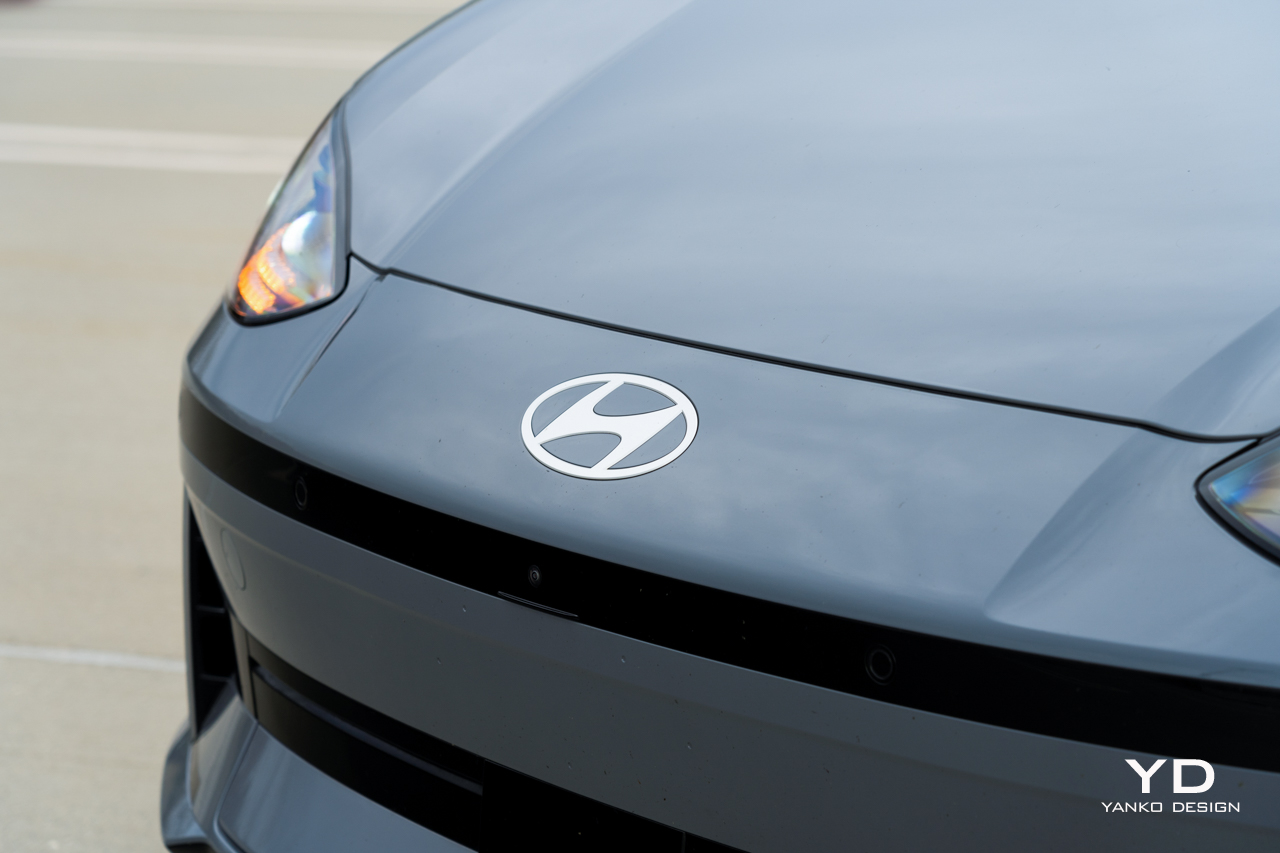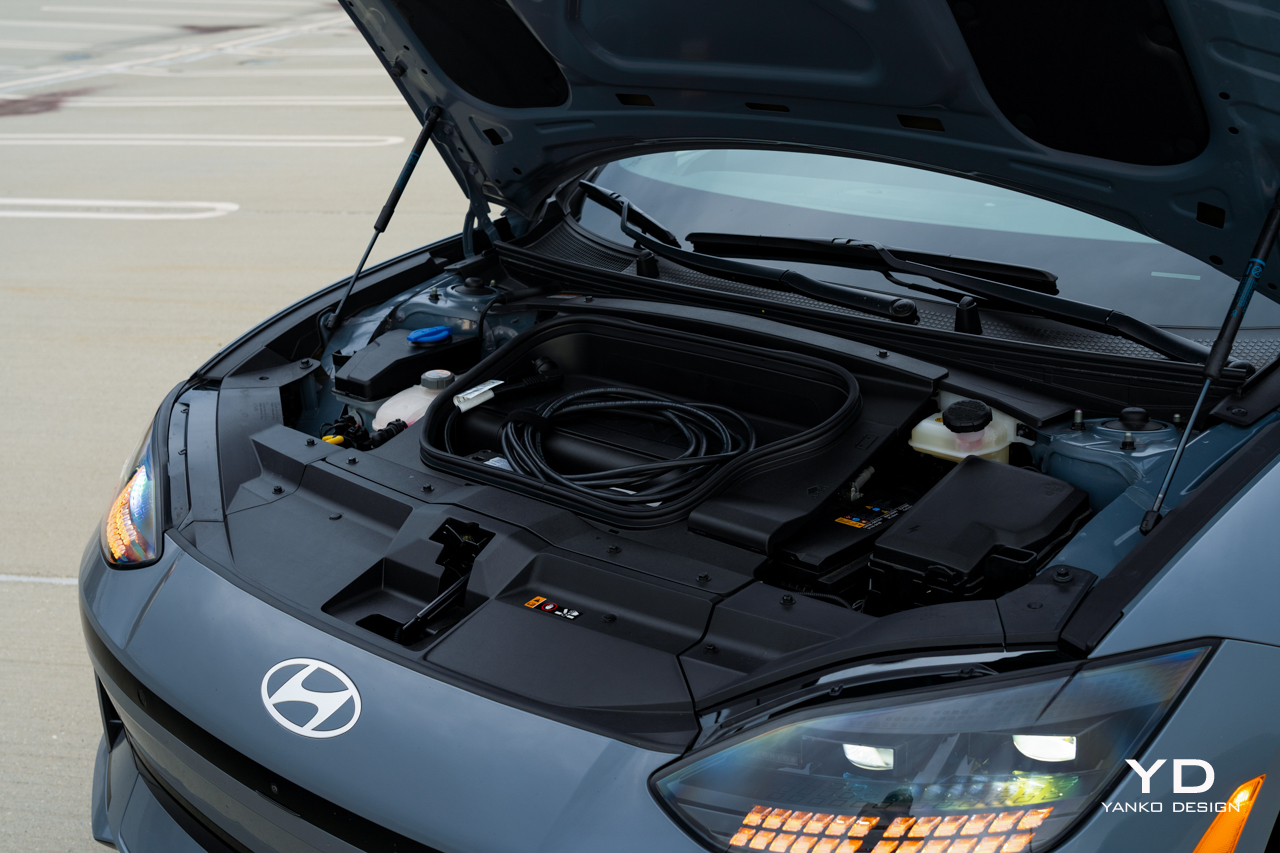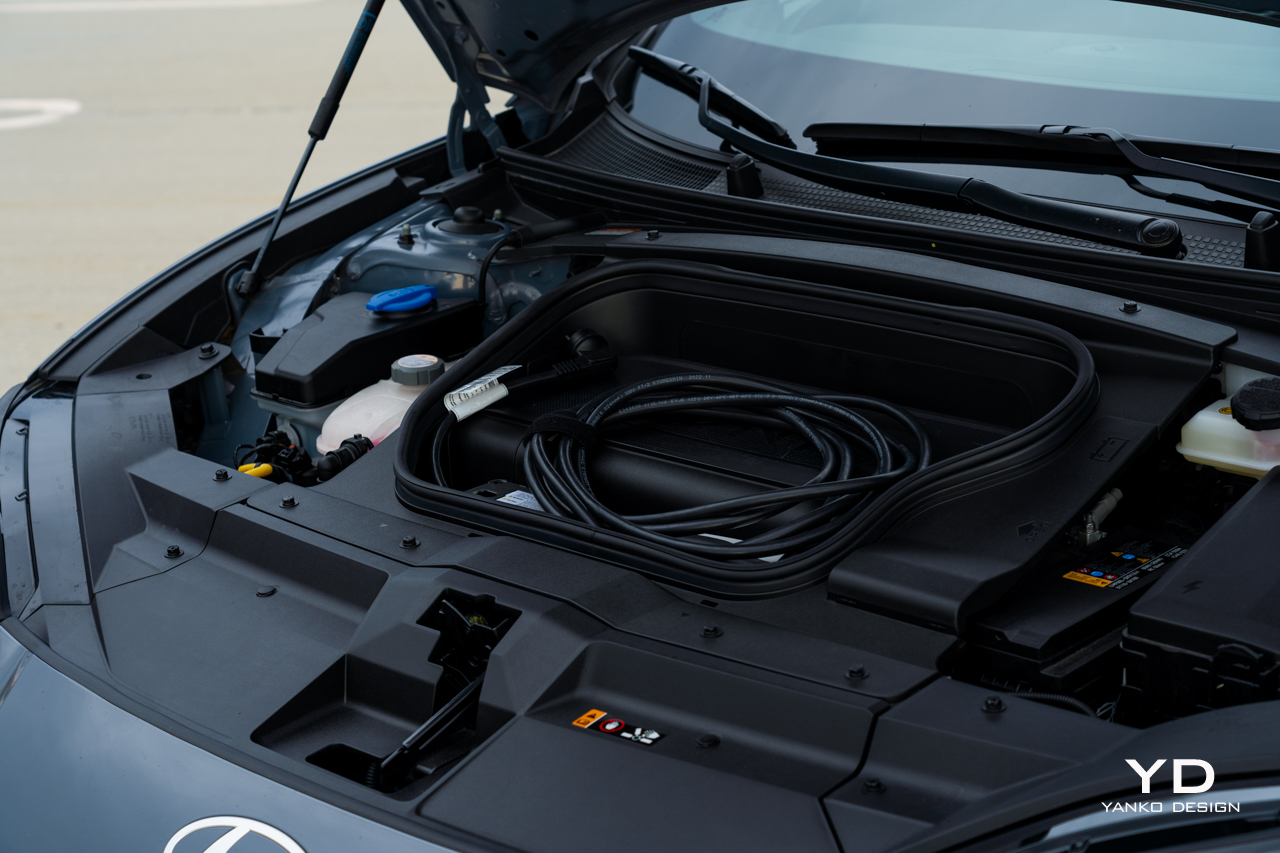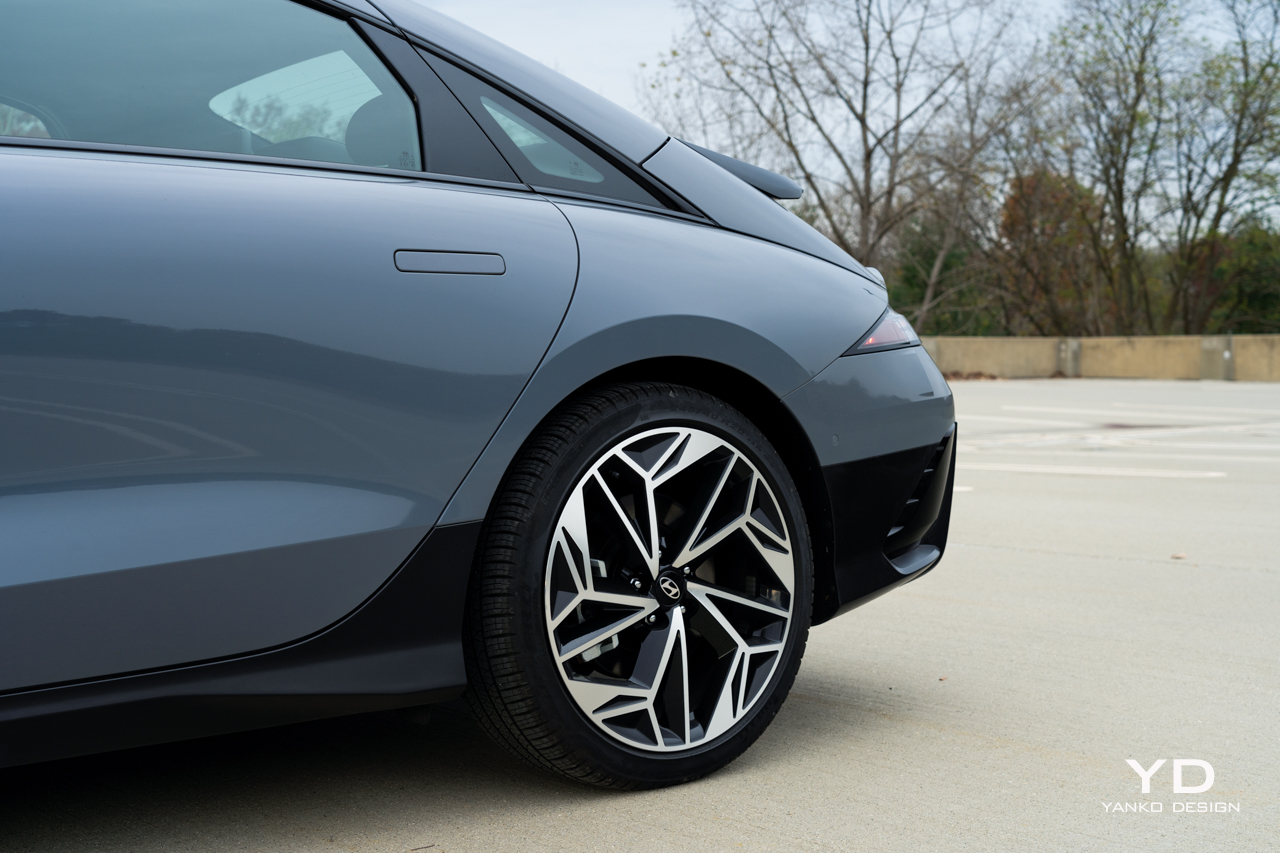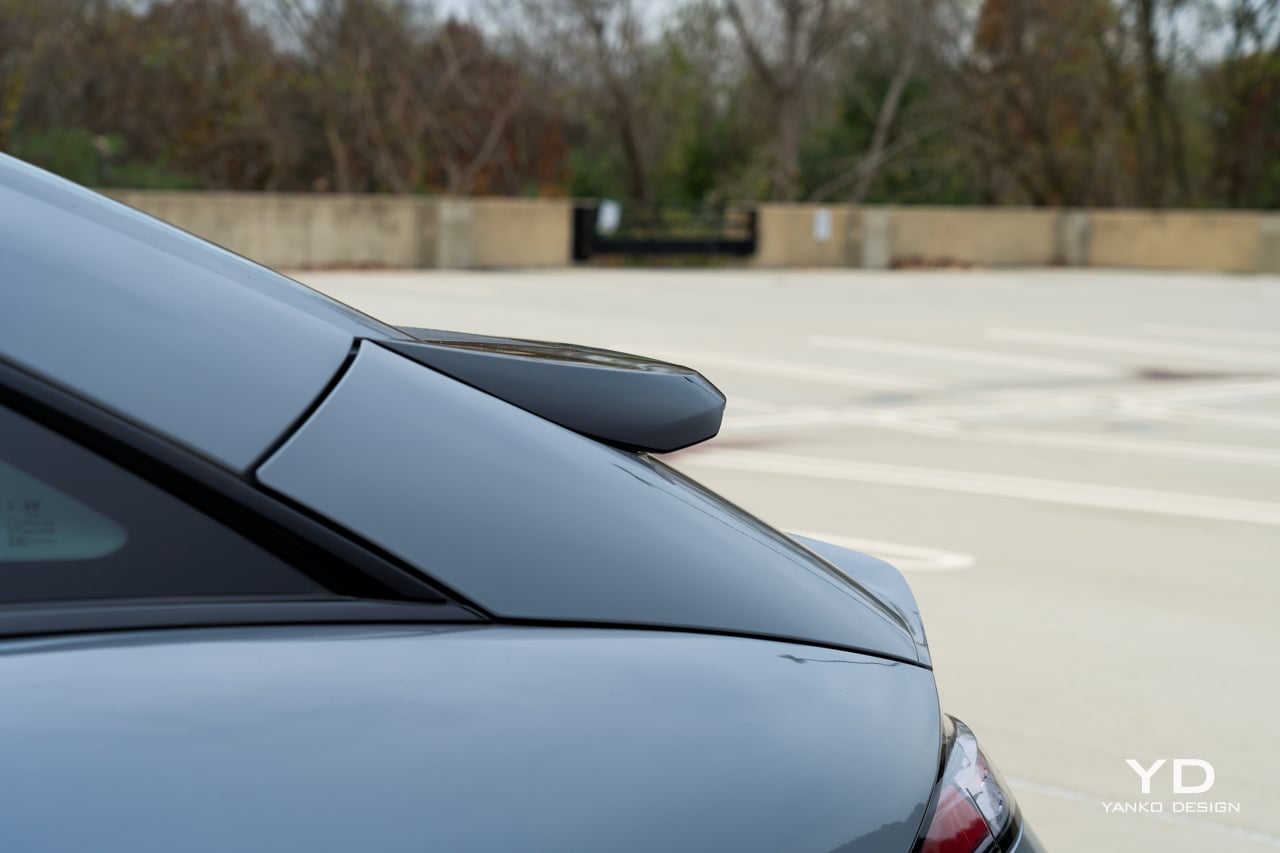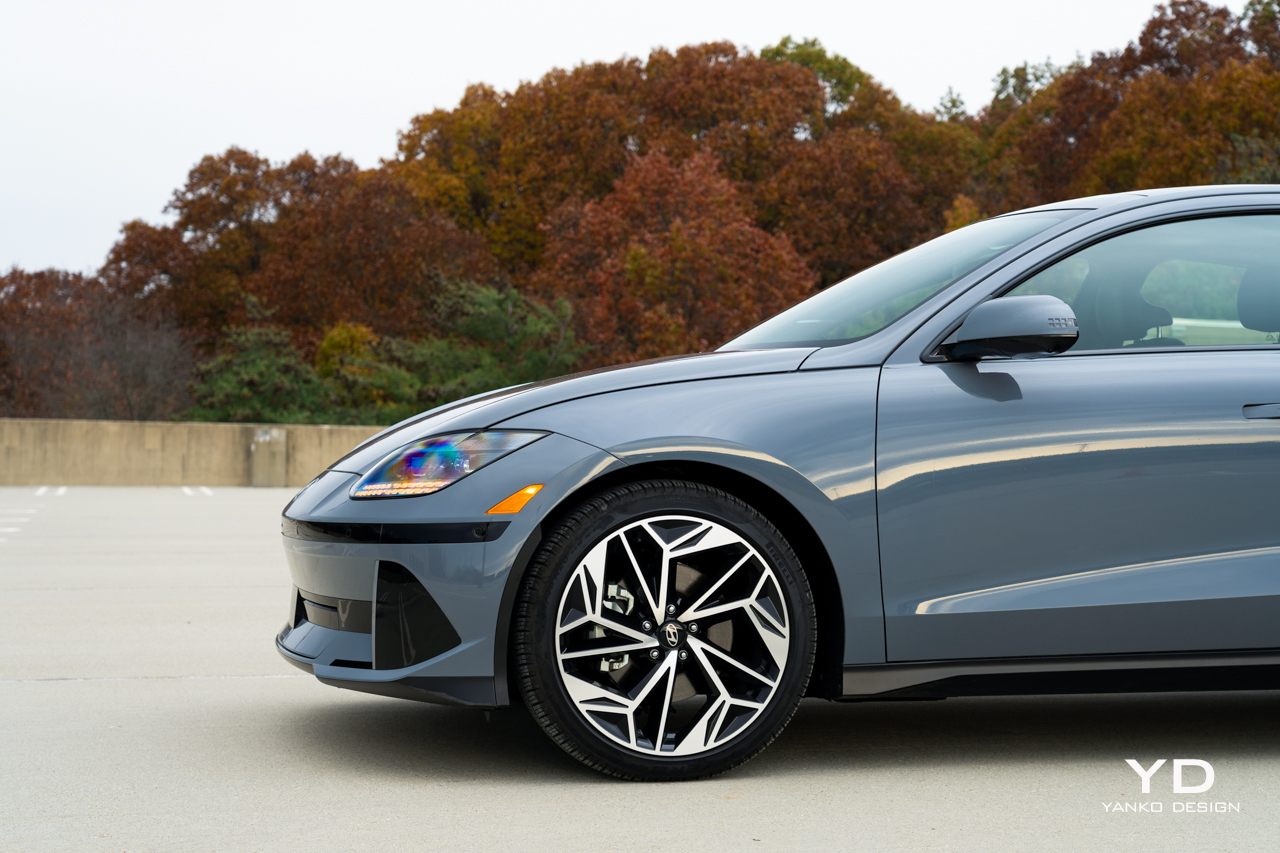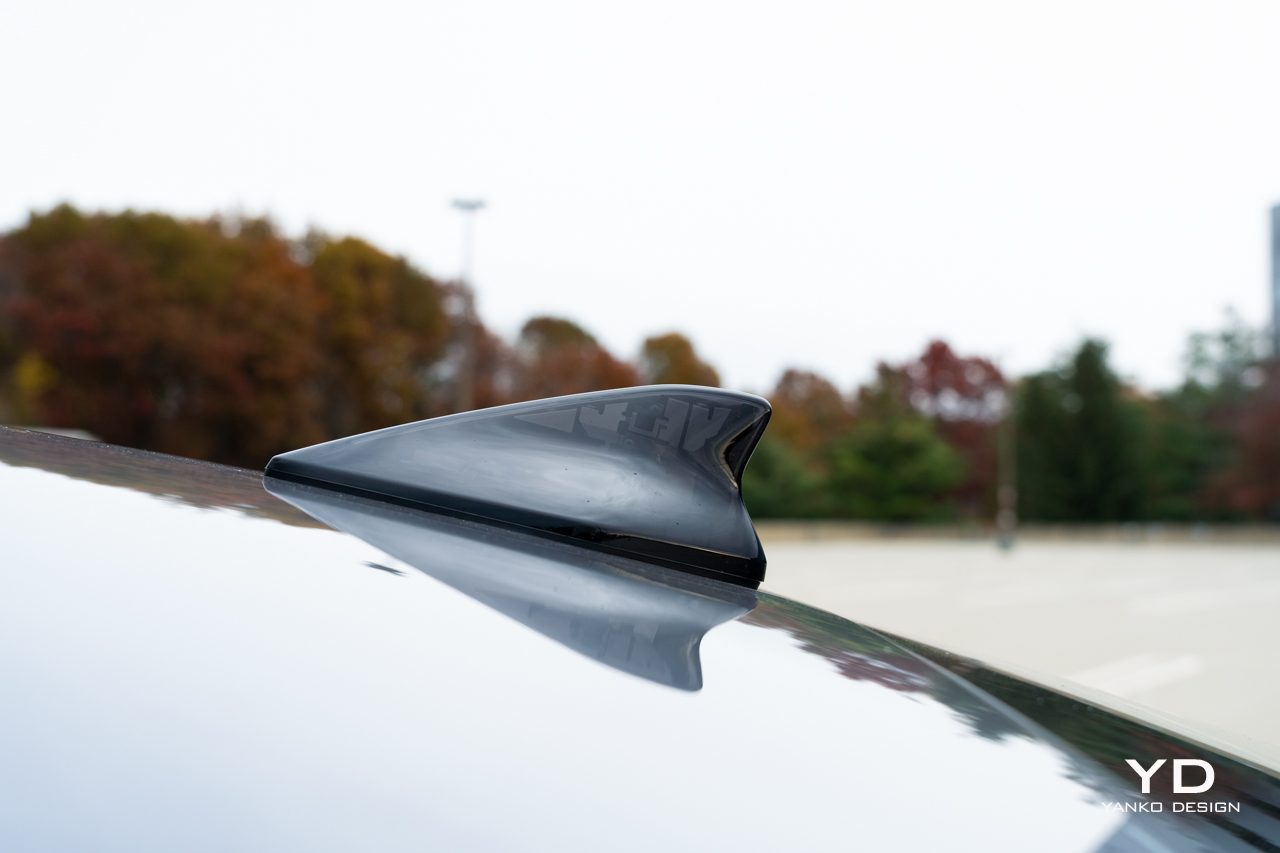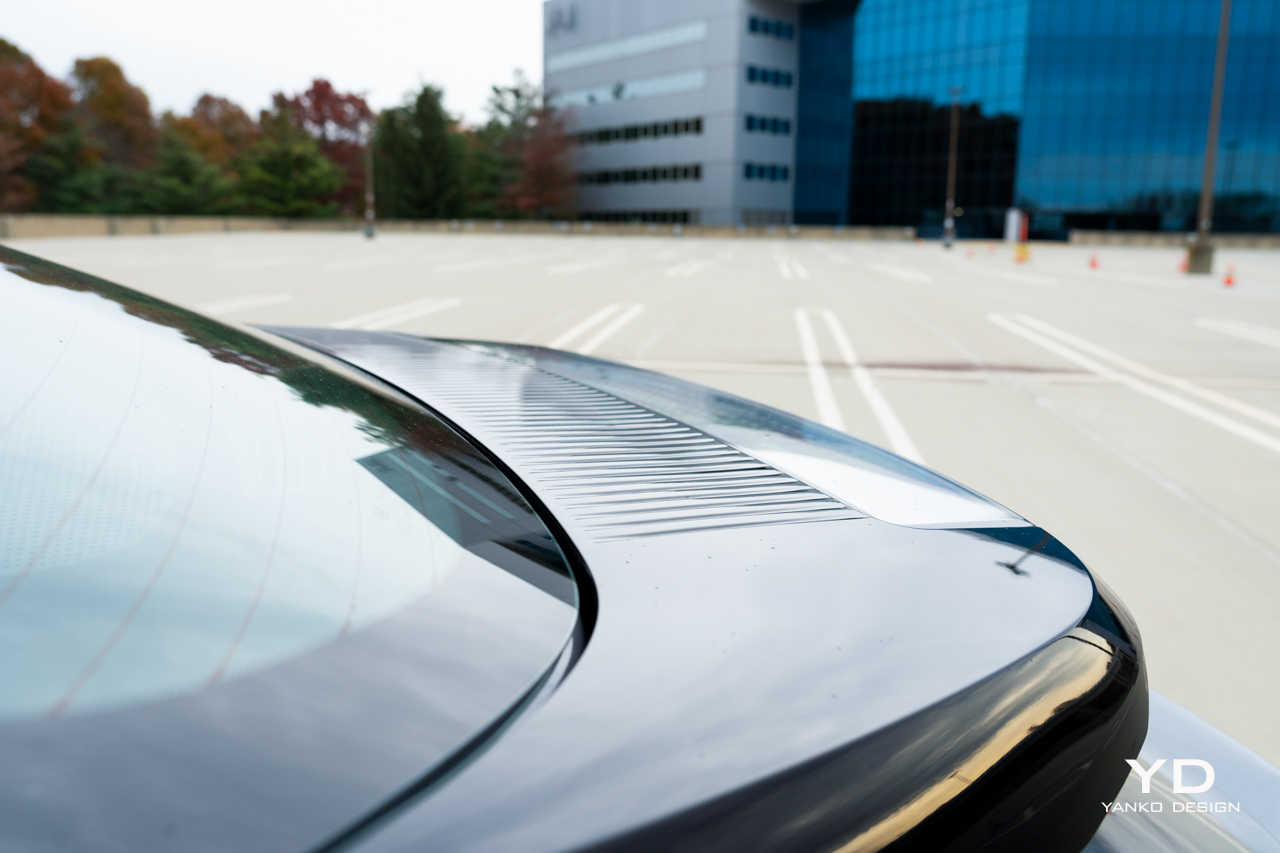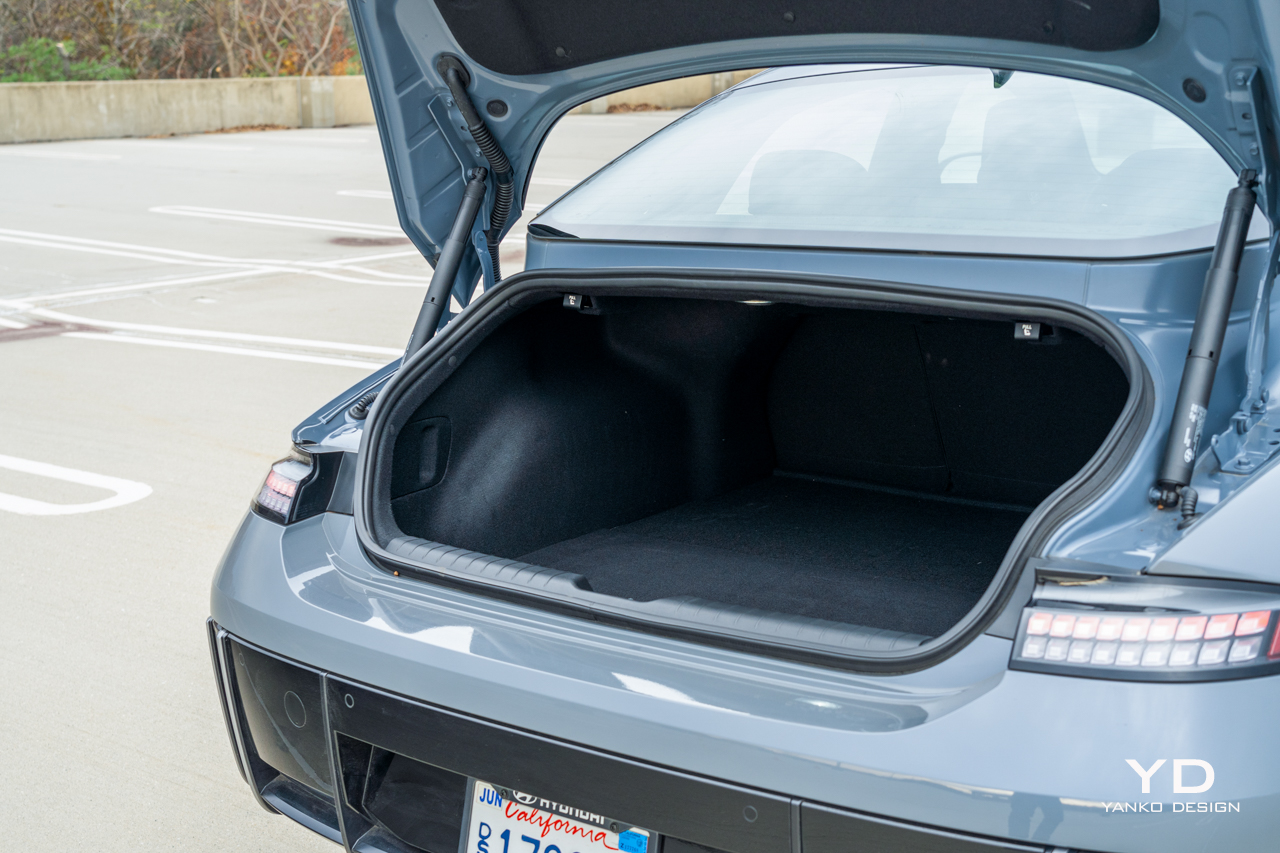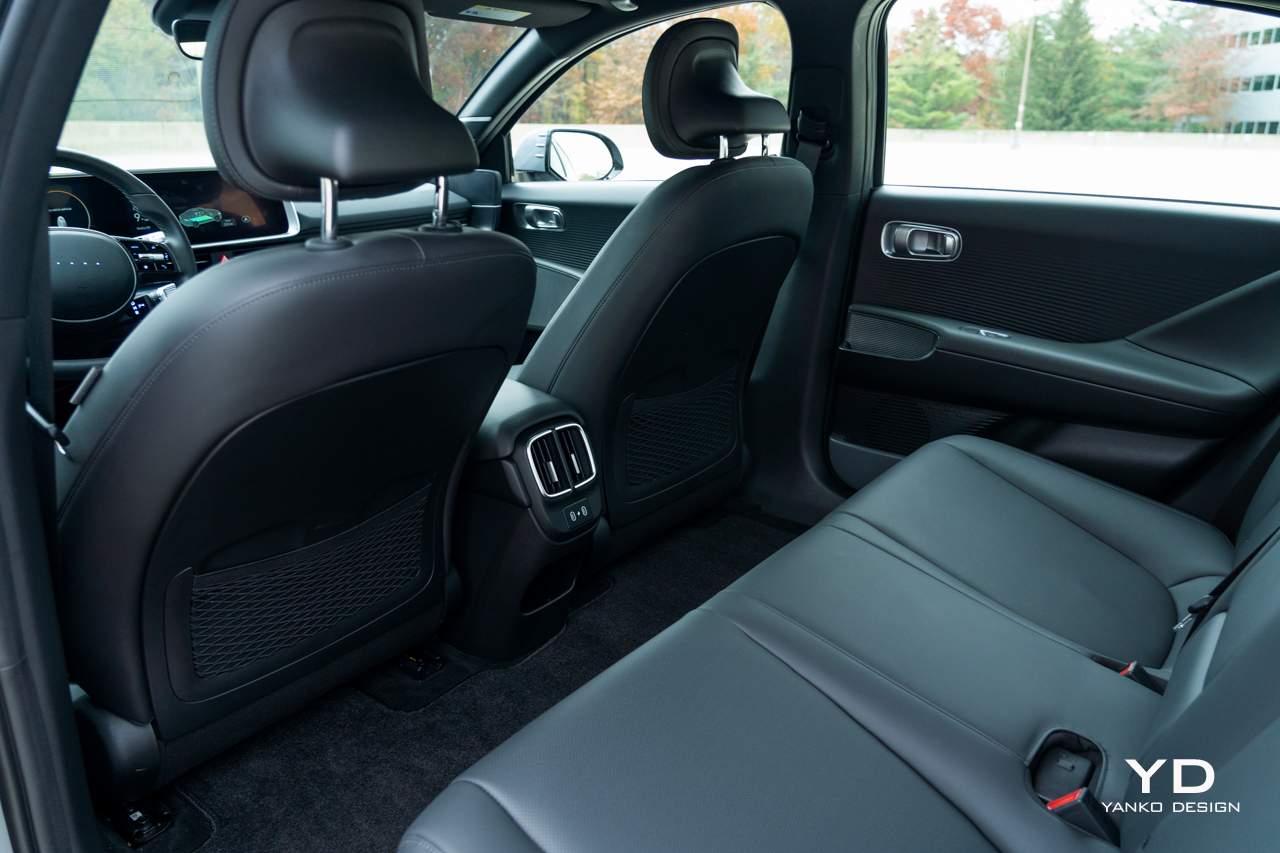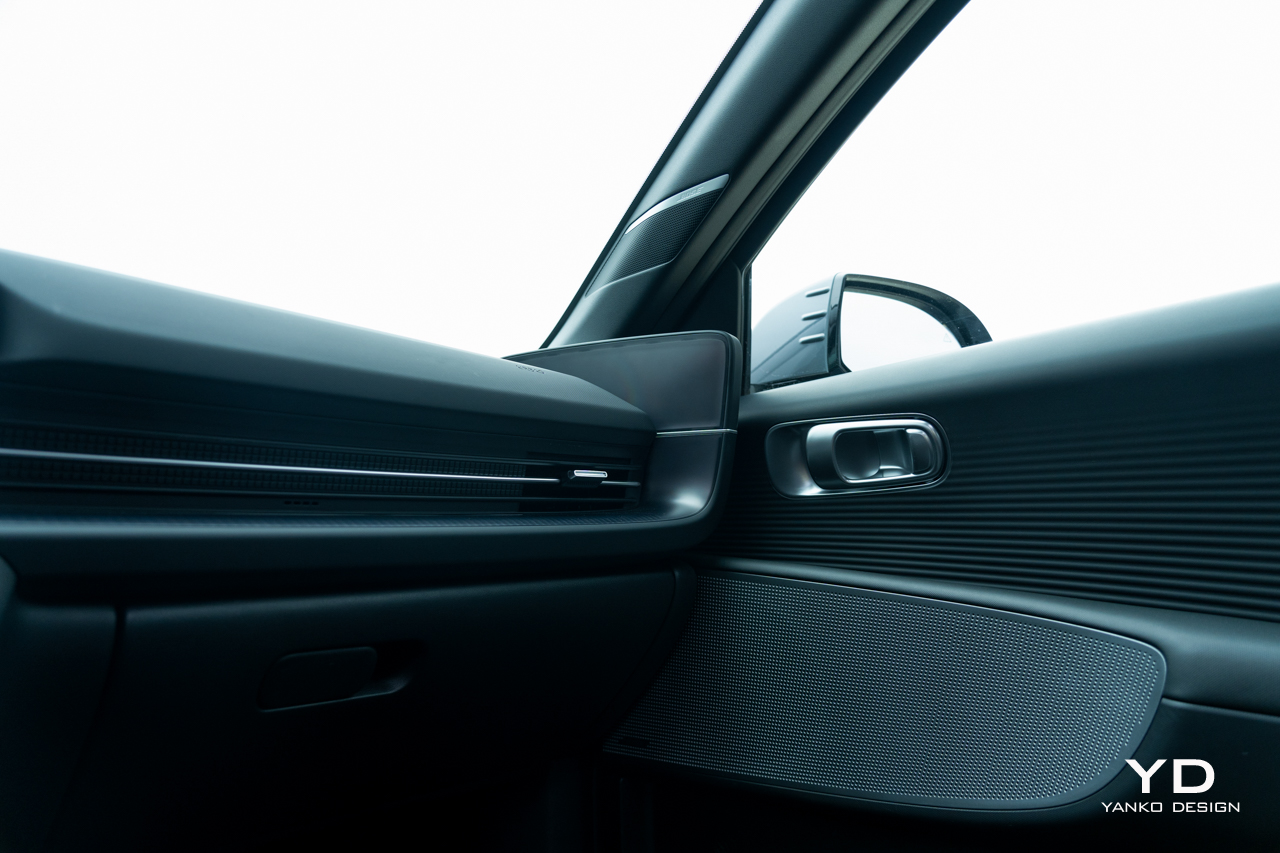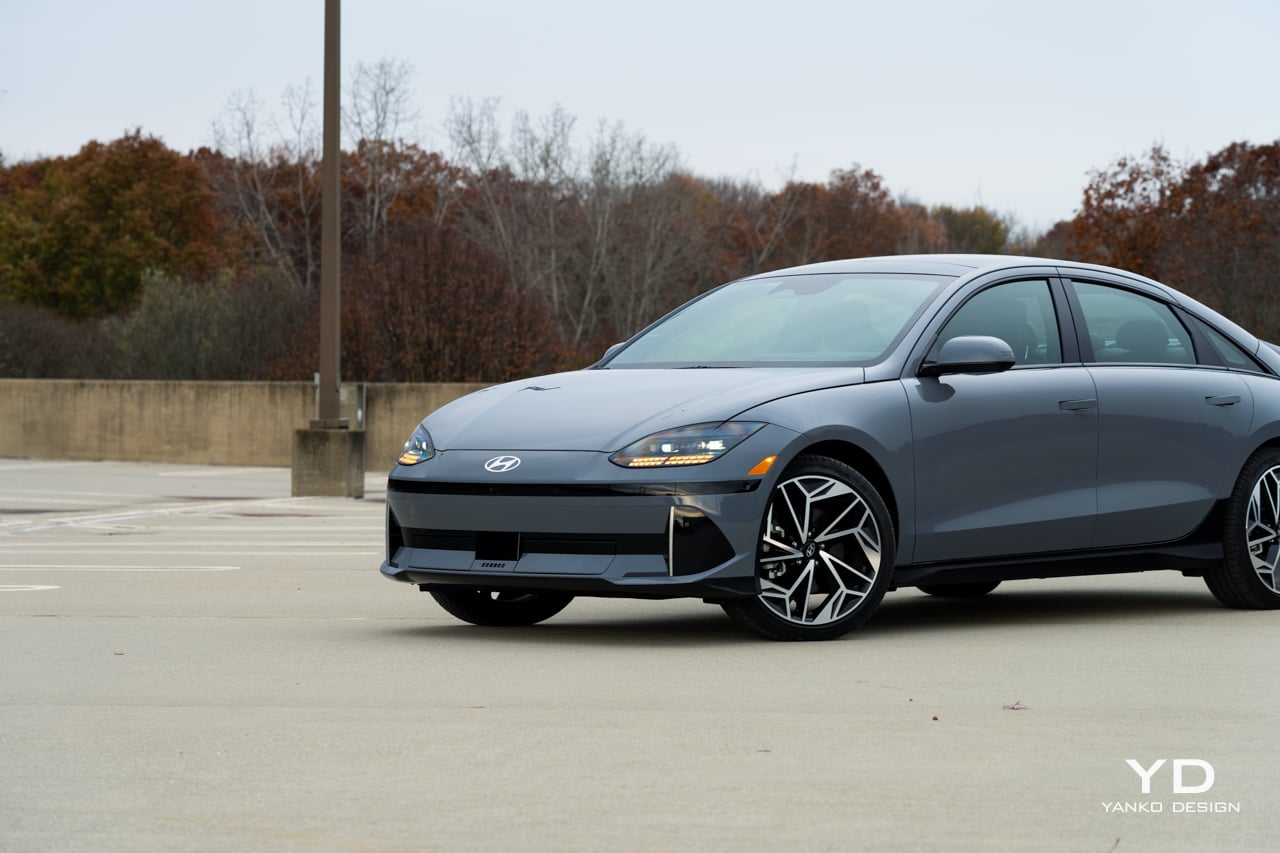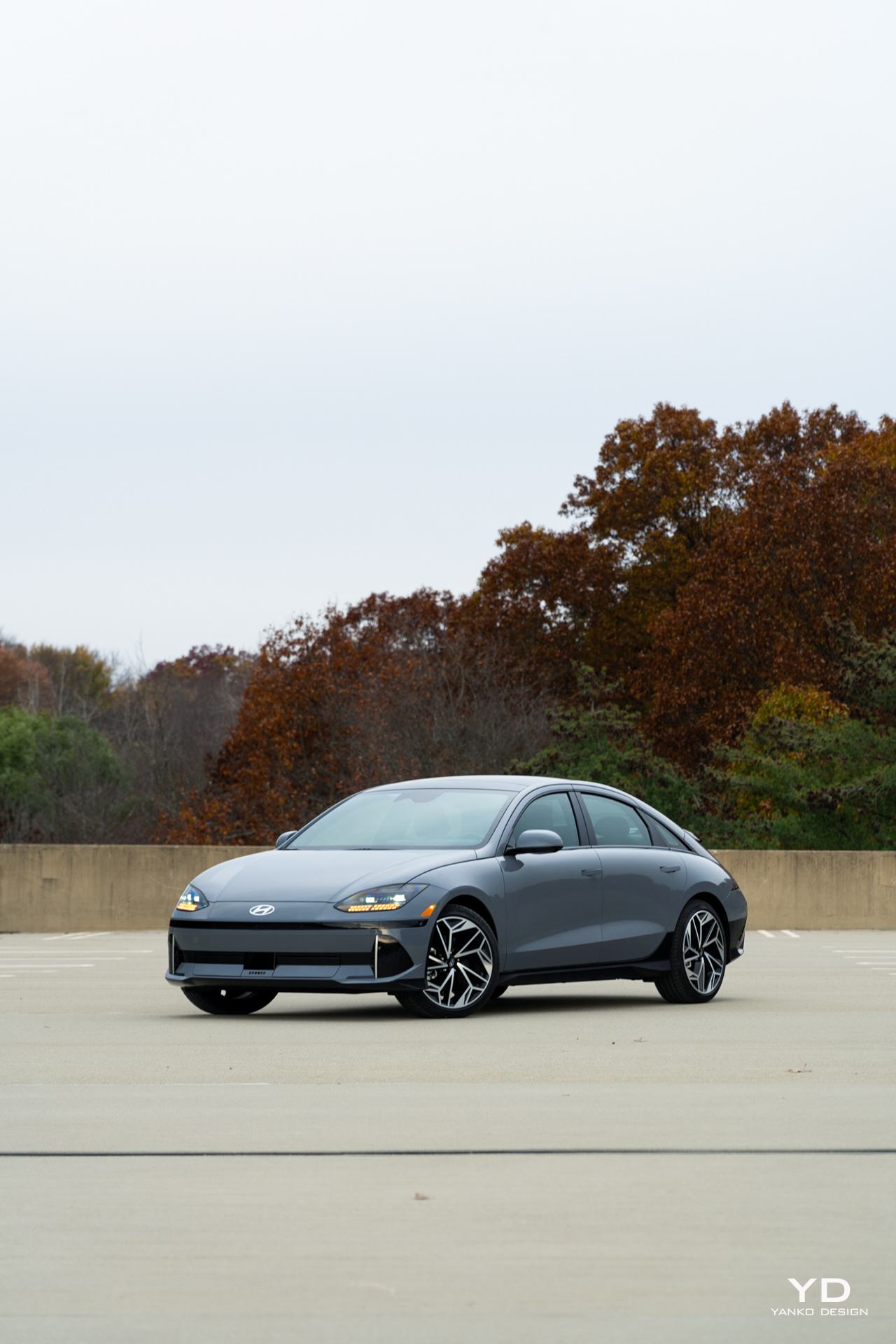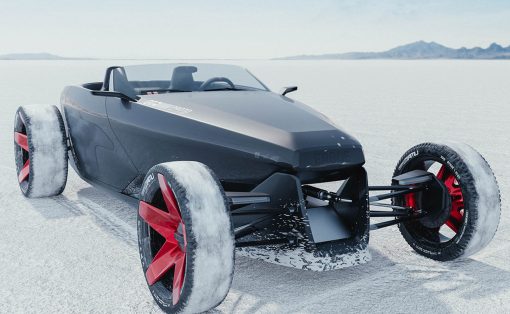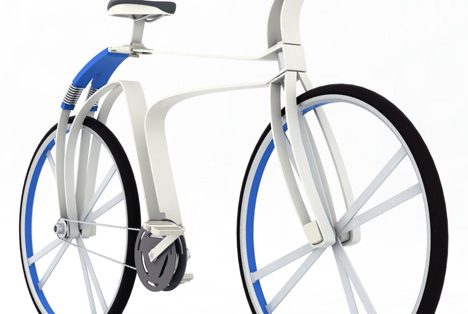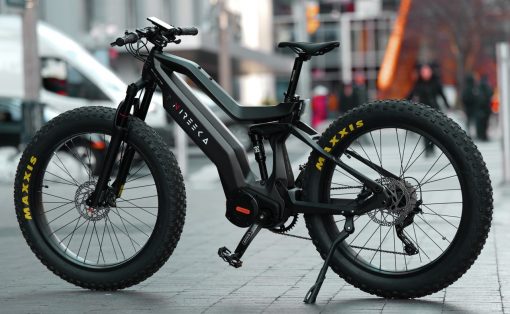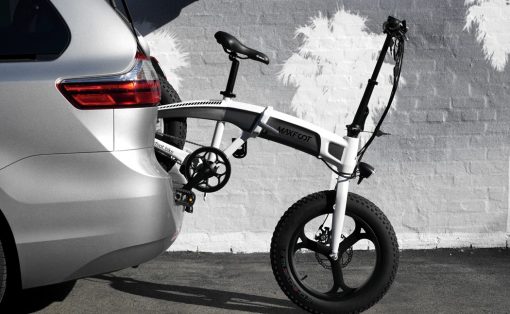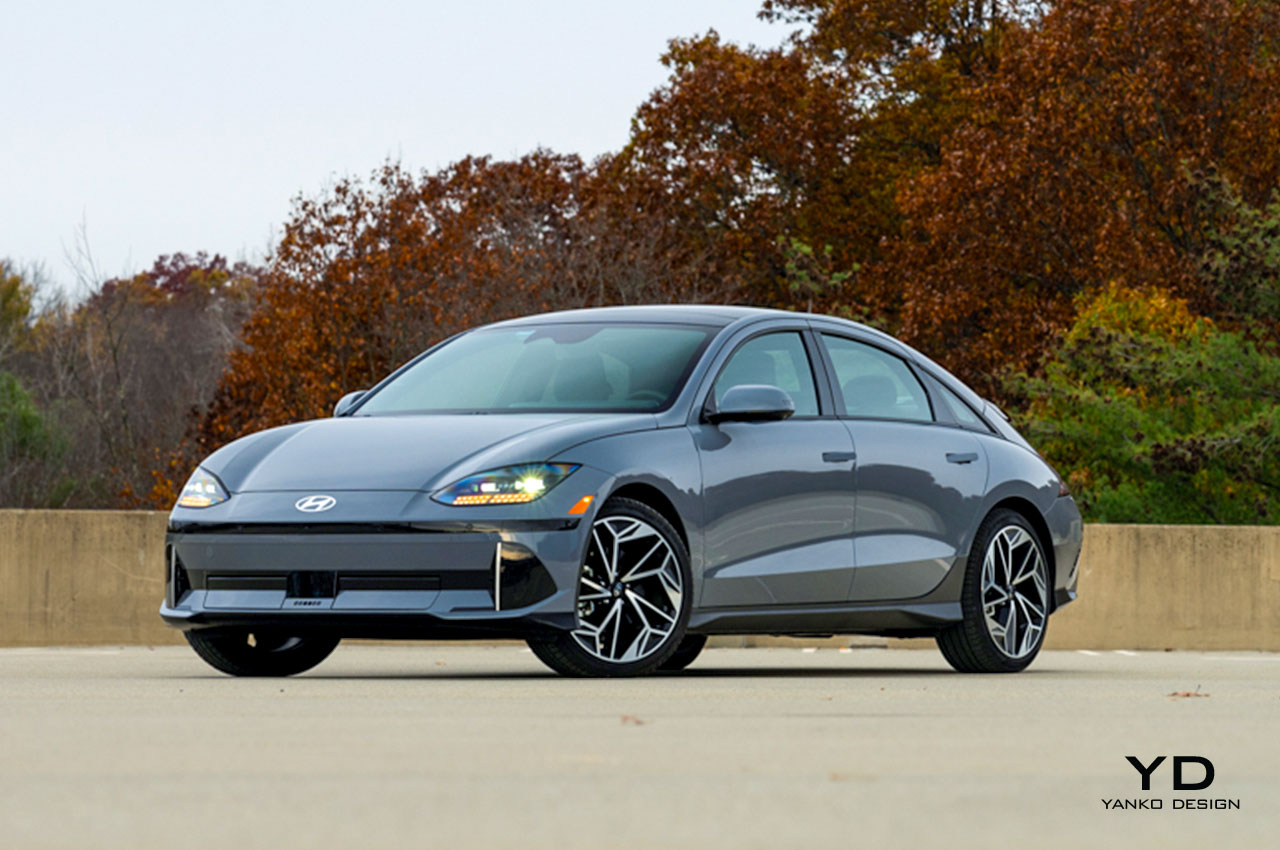
PROS:
- Stellar range
- Compelling style
- Good technology
CONS:
- Tiny trunk
- Limited headroom
- Inaccurate range predictions
The battle for aerodynamic performance has created some compelling shapes over the years, but it’s mandated far more that would be called boring. Amorphous machines like the Mercedes-Benz EQS and the Tesla Model S haven’t exactly won the hearts or minds of many buyers. But still, it’s an important fight. With buyers demanding ever more range and efficiency from their EVs, a car cheating the wind is even more important now than ever.
The Ioniq 6 is Hyundai’s most extreme aerodynamic experiment yet. With a drag coefficient of just 0.22, it’s the slipperiest car ever from the South Korean manufacturer. Impressively, it’s a figure that approaches or matches other, more boring shapes like the aforementioned Mercedes and Tesla.
Despite that, it’s a car that has a distinctive, fetching shape and a visual appeal all its own. That it looks like nothing else on the road is a good start, that it’s such a comprehensively good car and is available with 300 miles of range is even better.
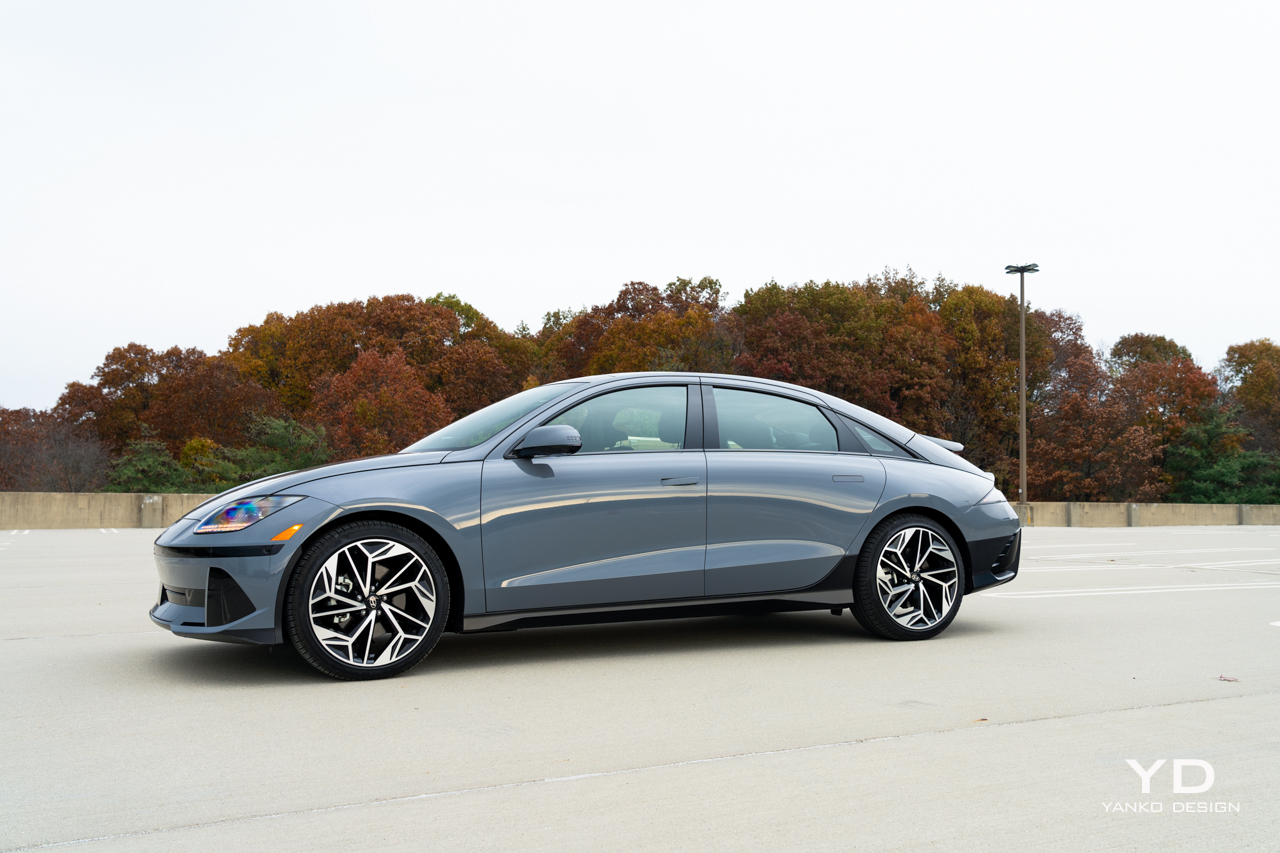
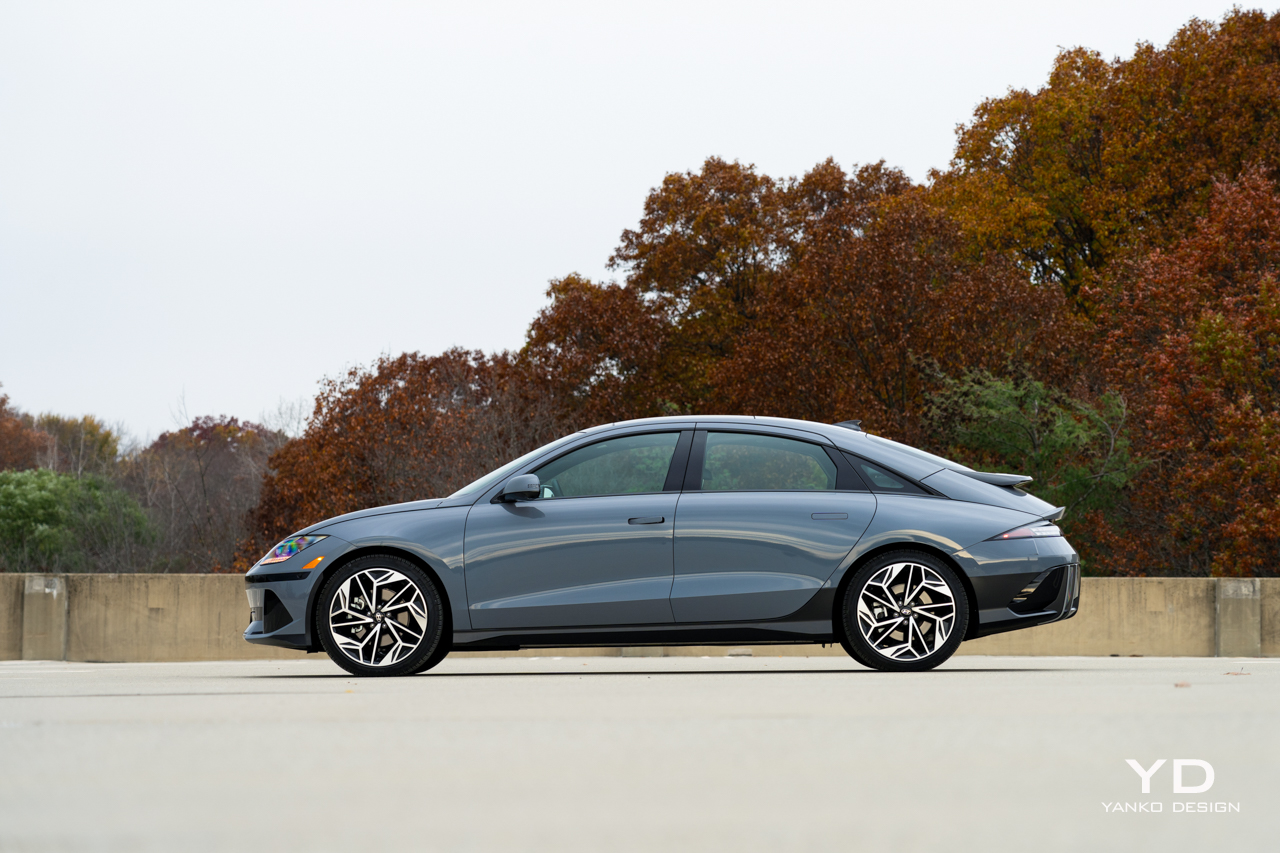
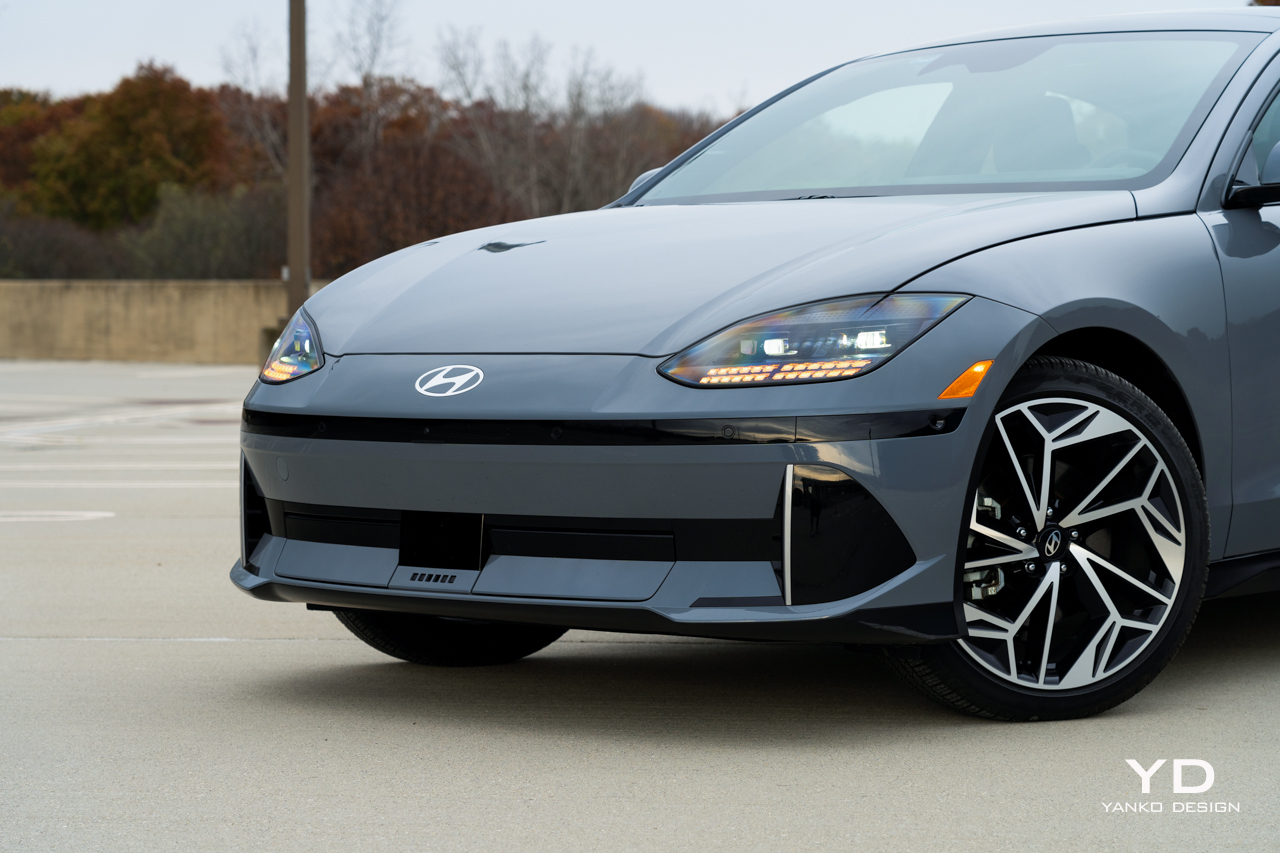
The Packaging
The shape of the Ioniq 6 is quite basic, just a simple front-to-rear arc that doesn’t by itself offer much in the way of intrigue. But within that low-drag profile is a series of details and highlights that make this sedan special.
The most interesting angle is the rear. Instead of simply tapering down to the ground, designers integrated a large spoiler into the back of the Hyundai. This definitely serves an aerodynamic purpose, but more importantly, it adds an air of sportiness to what could otherwise be a utilitarian profile.
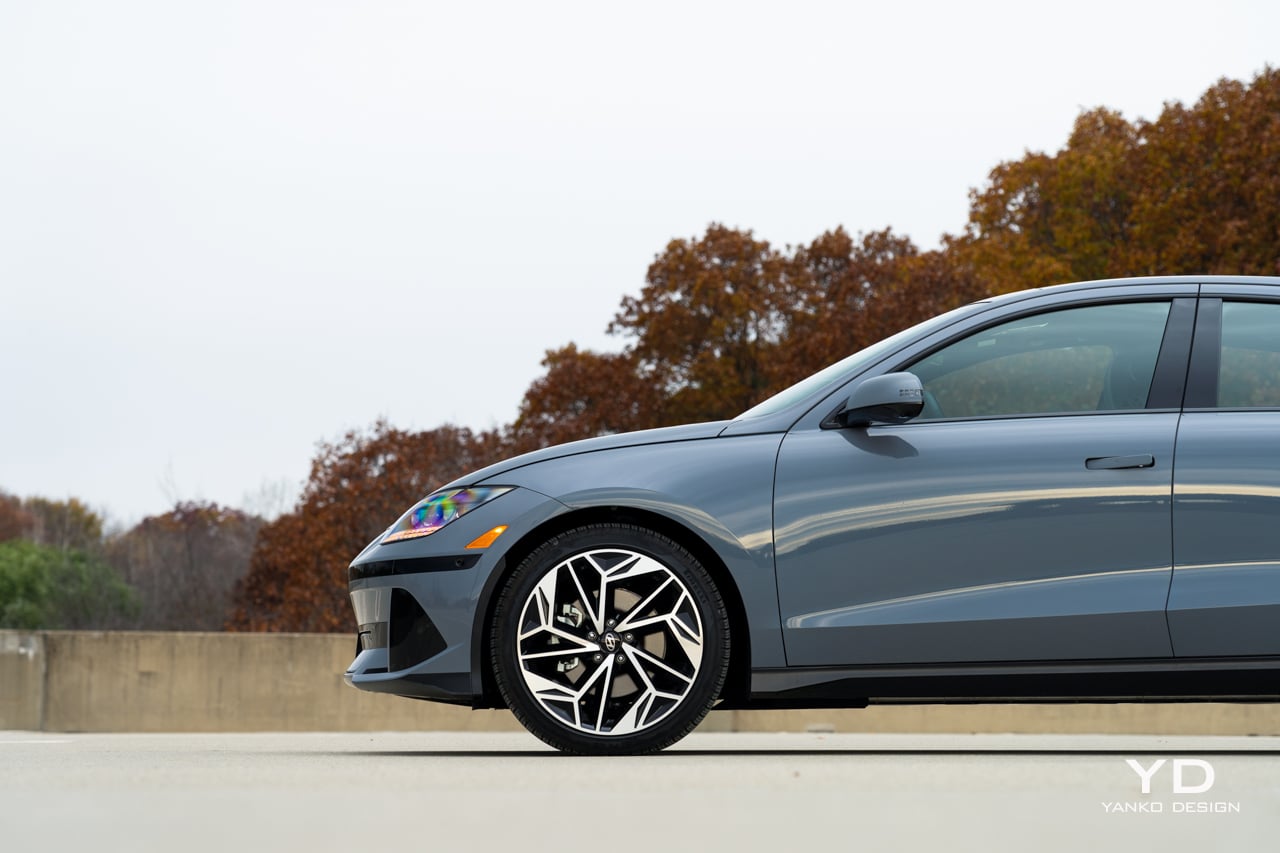
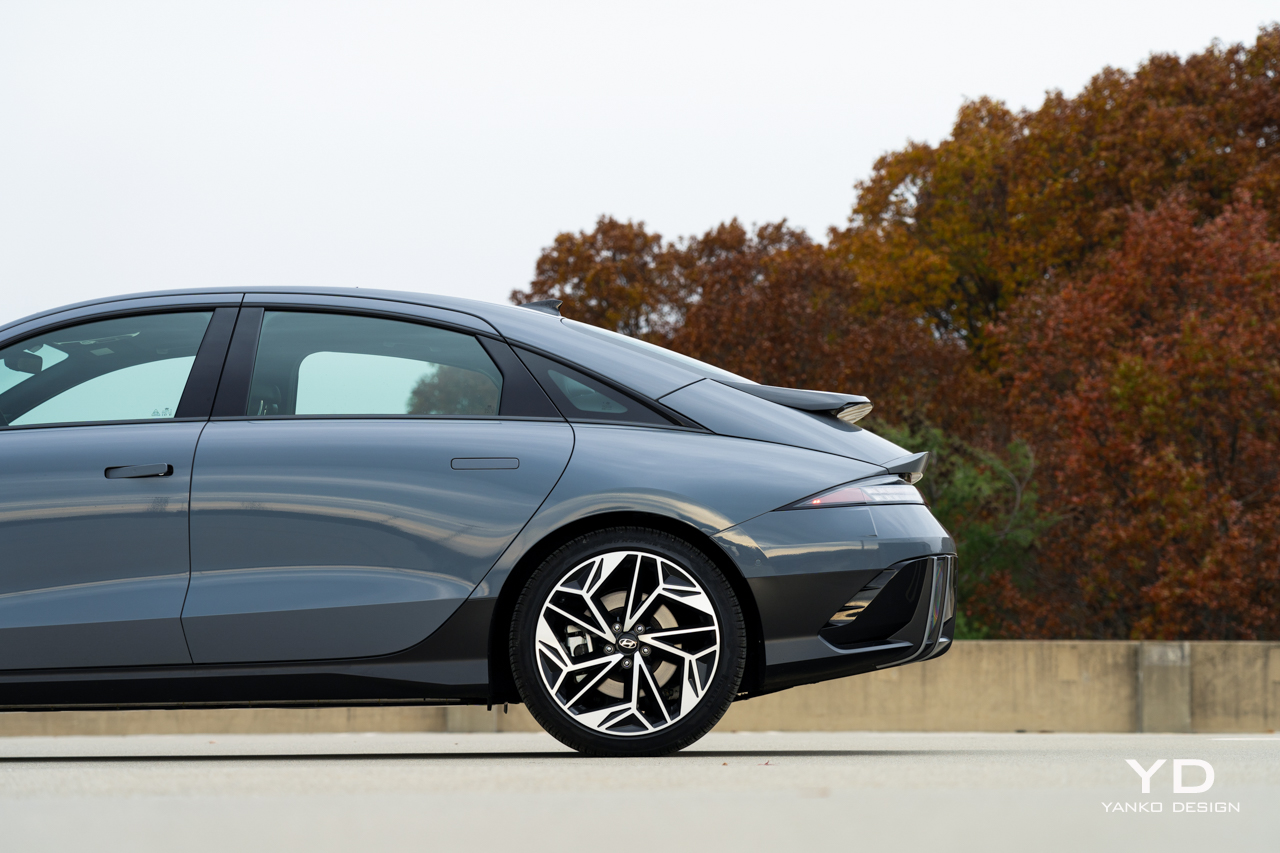
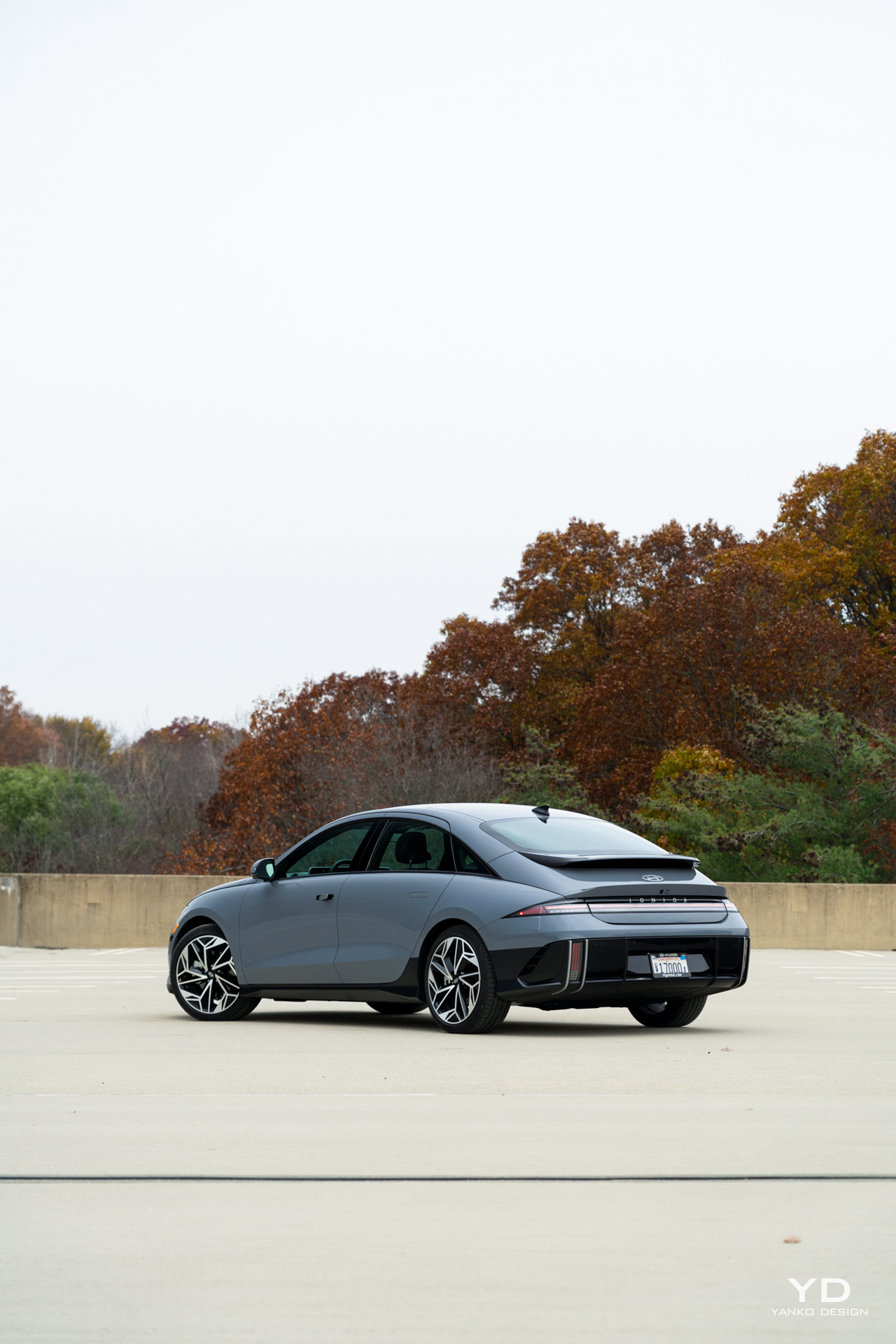
Like the rest of the car, that spoiler is riddled with pixel lights and other details, creating a car that looks as interesting up close as it does from afar. Even the little fin antenna perched up on the roof contains some surprises, a transparent housing that exposes its circuitry when you get up there and really look at it. That is something you will want to do with the Ioniq 6.
Unfortunately, the car’s slippery profile does come with its compromises, starting with storage space. There’s effectively no storage space under the frunk, and the trunk is not much better. The opening to the boot of the Ioniq 6 is wide but low, exposing only 11.2 cubic feet of storage space. That’s about a third less even than the Sonata, a car of otherwise similar dimensions.
In fact, the Ioniq 6 is nine inches longer even than the Ioniq 5. That length does impart some advantages, like a copious amount of legroom in the rear seats. Headroom, though, is more limited. Passable, but far from generous. Rear seat occupants get a pair of USB-C ports and even a 250V three-prong outlet for juicing up more power-hungry devices.
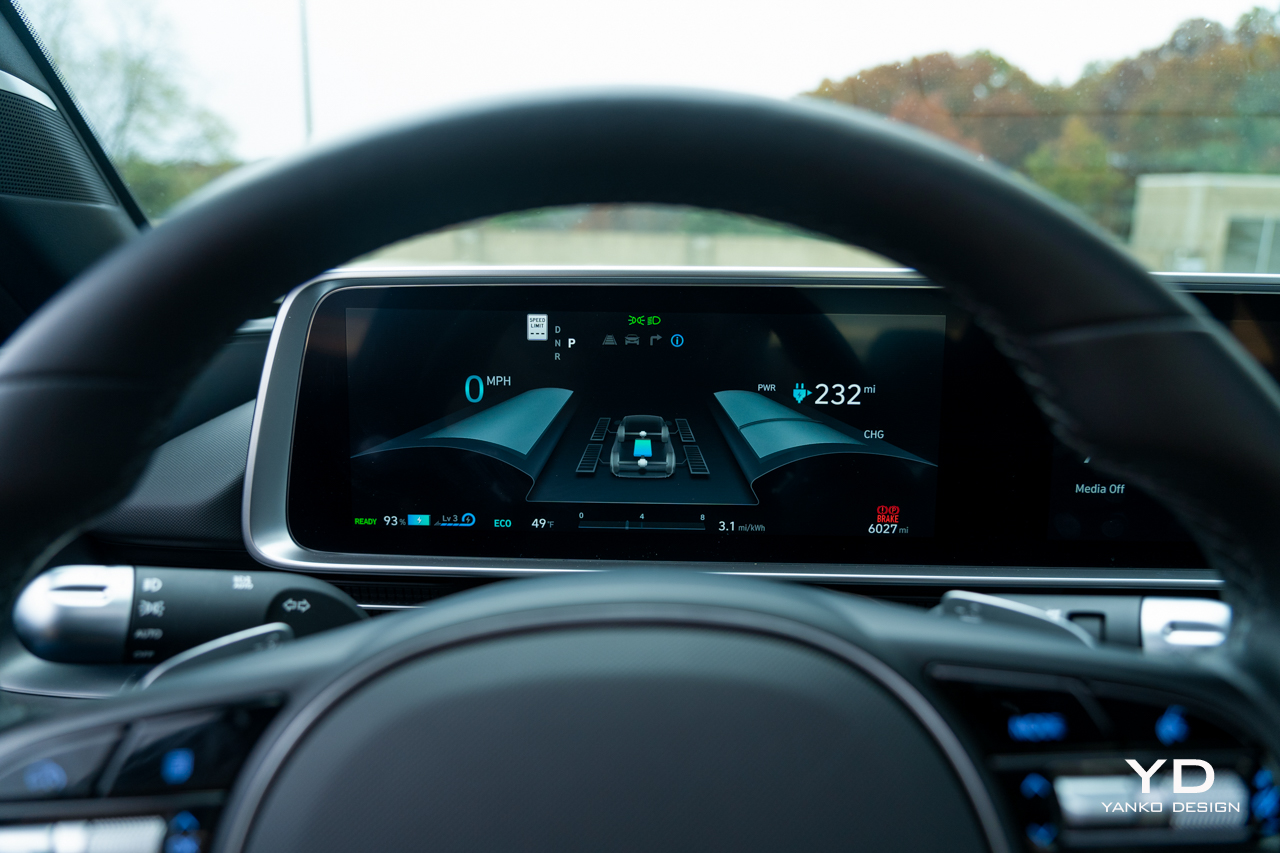
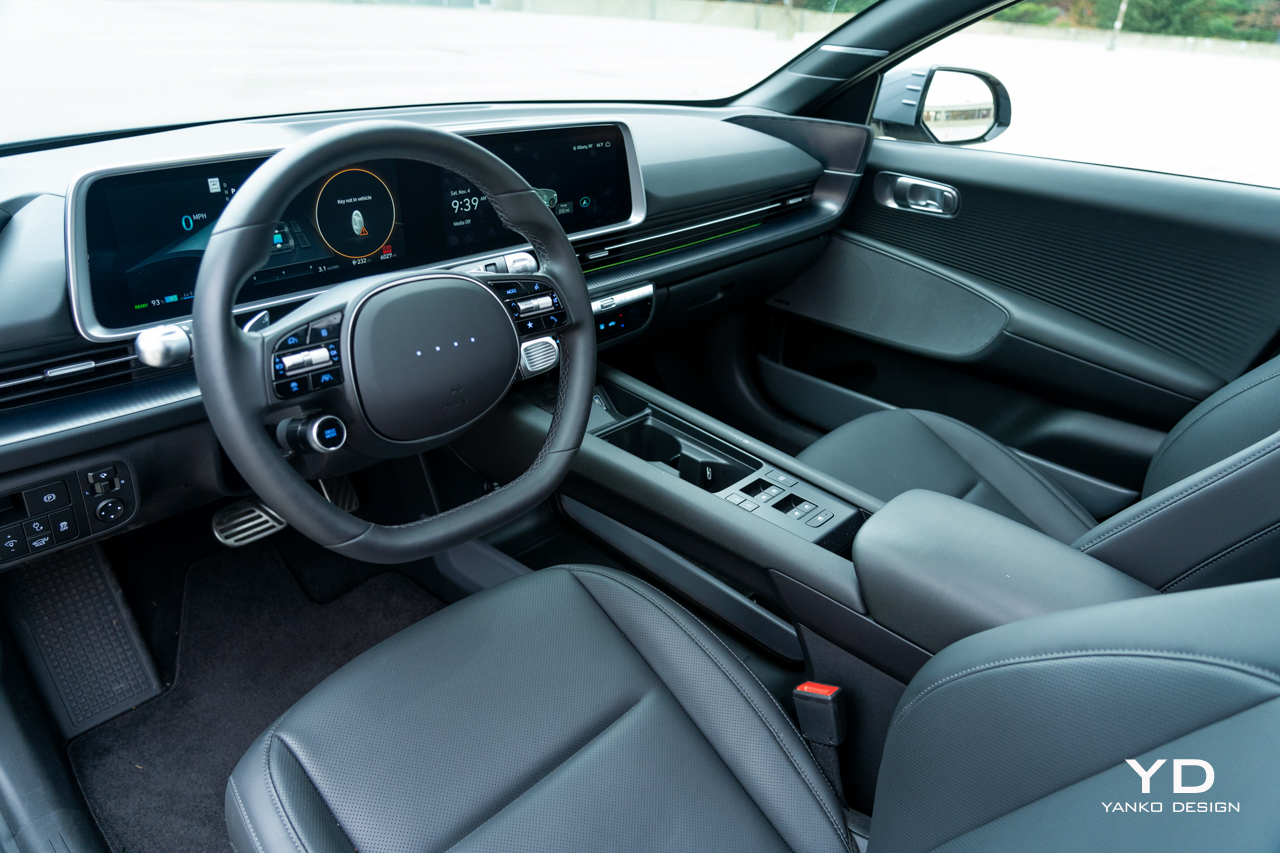
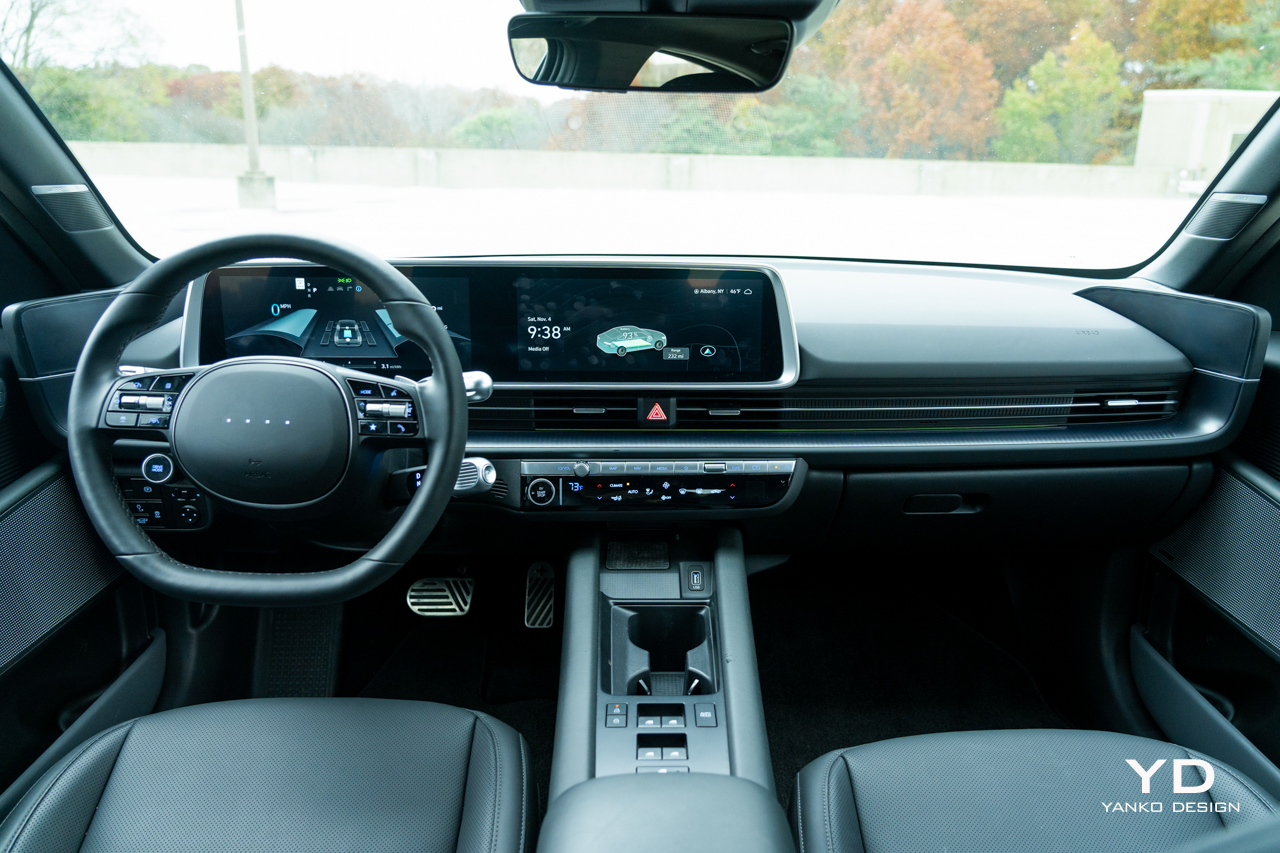
Two more USB-C ports are lurking in the armrest, plus a USB-A port up front and a Qi wireless pad. You’ll need to use one of those ports if you want either Android Auto or Apple CarPlay, because neither is supported wirelessly.
Up front, headroom is acceptable but still not great. I’m six feet tall, and my hair just brushed the headliner with the driver’s seat situated as low as possible. Otherwise, seating is comfortable, power-adjustable and offering adjustable lumbar support plus heating and cooling. That heating is powerful, so much so that even on some very chilly mornings I found its highest setting too intense.
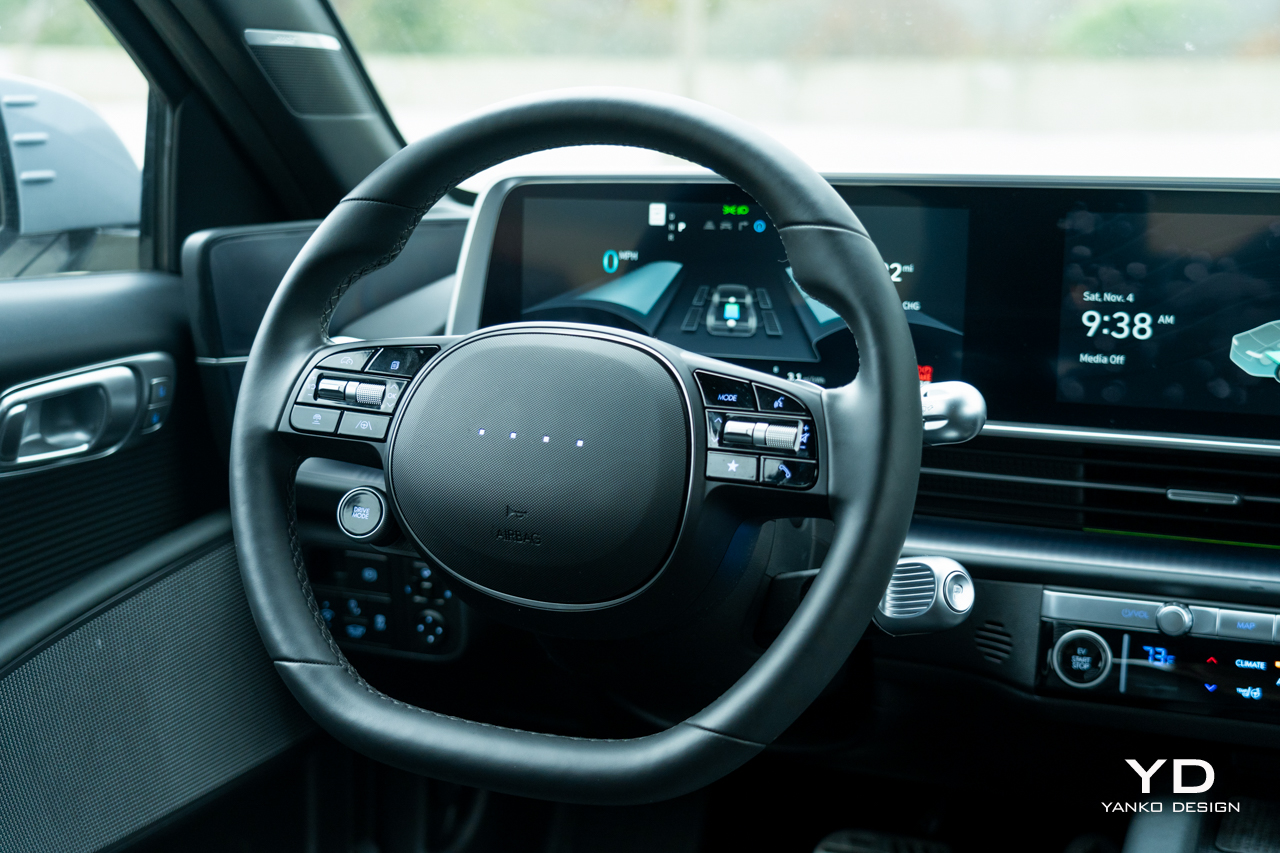
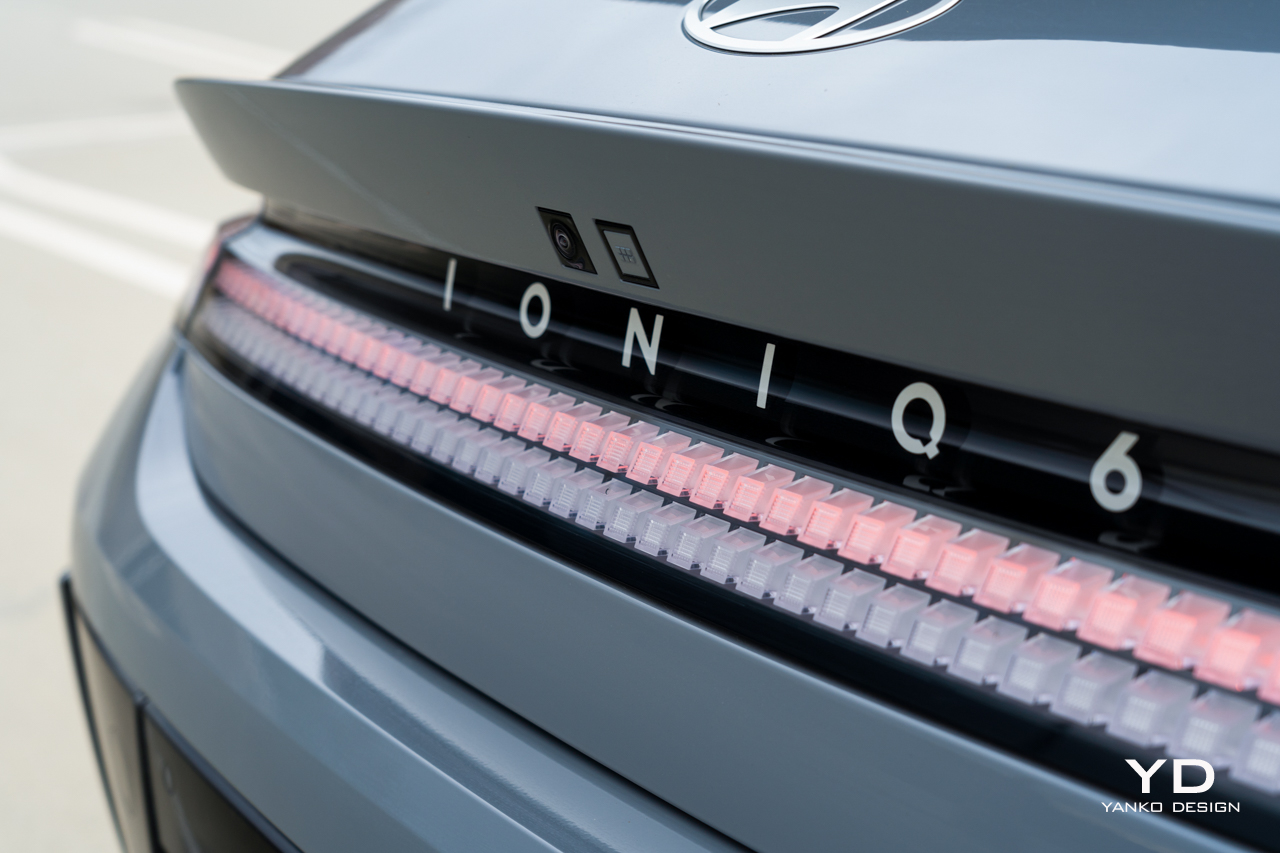
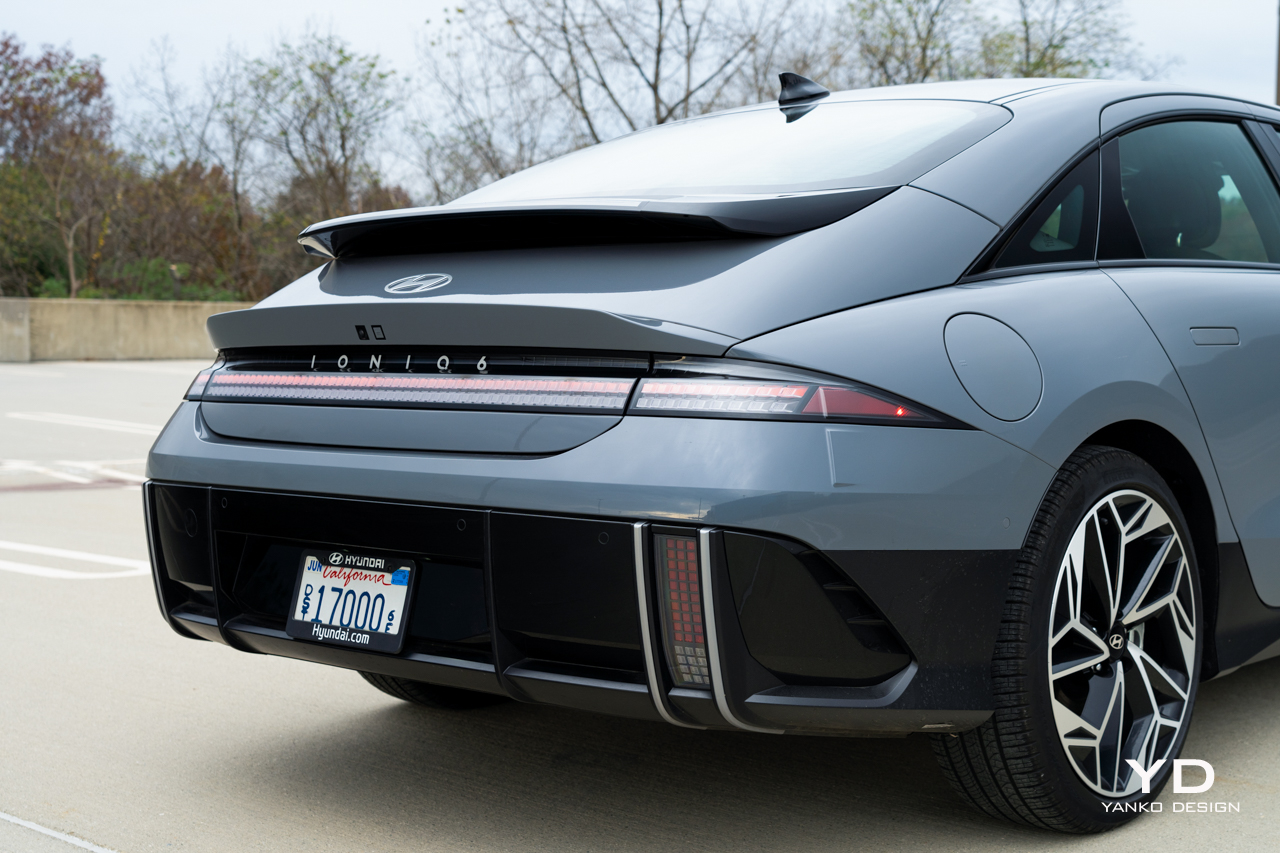
Interface
Like nearly everything else here, seat heater controls are buried in the touchscreen. There’s a small HVAC panel low on the center console where you can adjust temperatures and trigger the defrosters, but otherwise you’re left stabbing at that panel.
It’s a 12.3-inch unit, joined at the hip with another 12.3-inch panel that forms the gauge cluster. It’s the same basic layout as on the Ioniq 5 and it looks and works well here. The two displays are framed in matte silver, giving a clean, cohesive look.
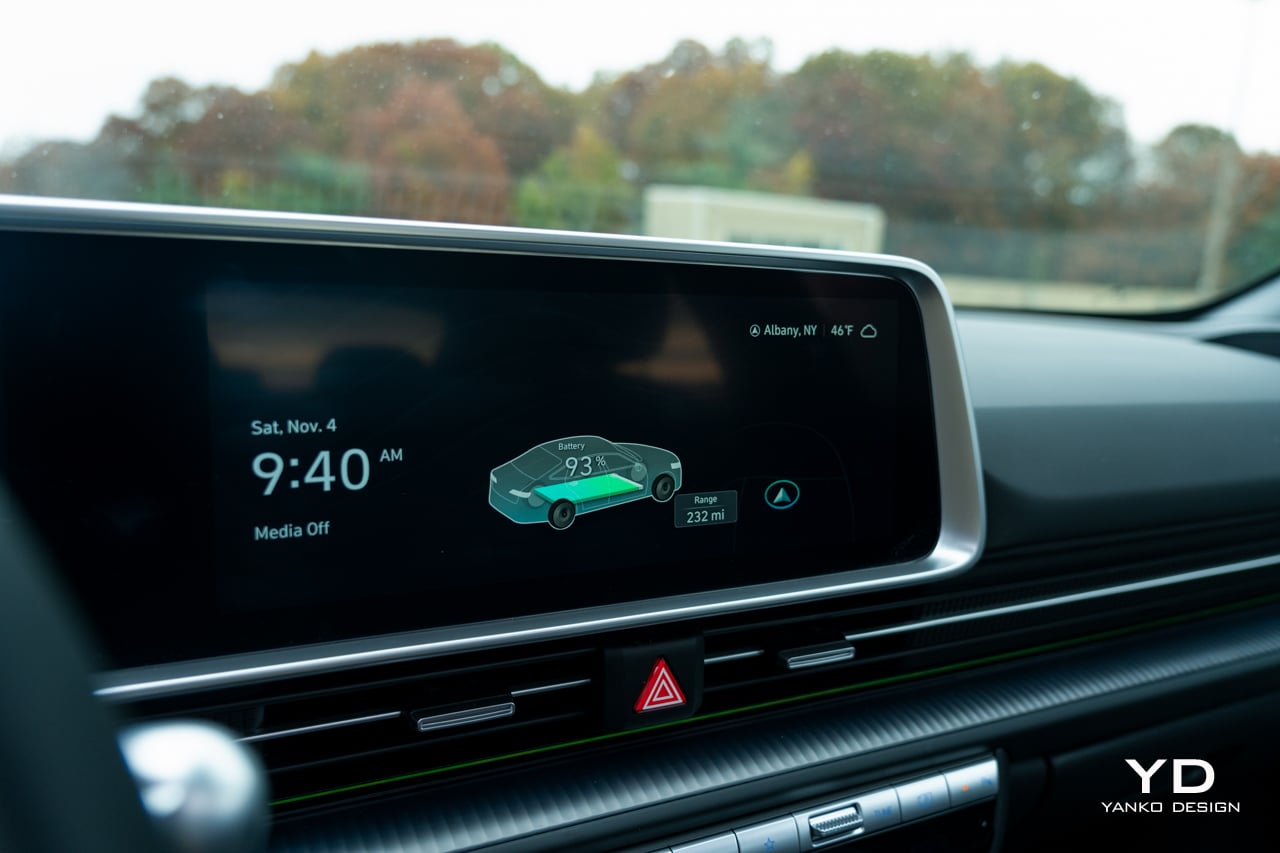
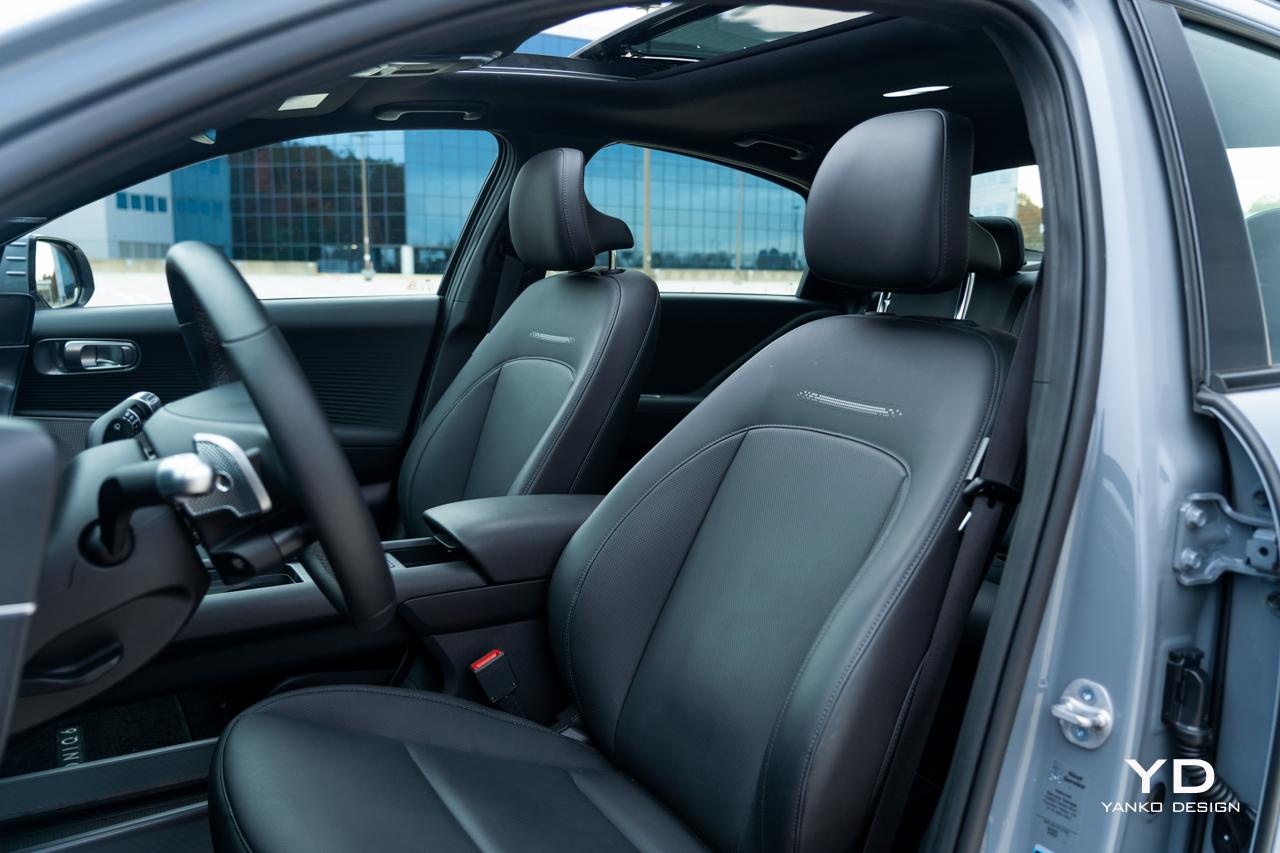
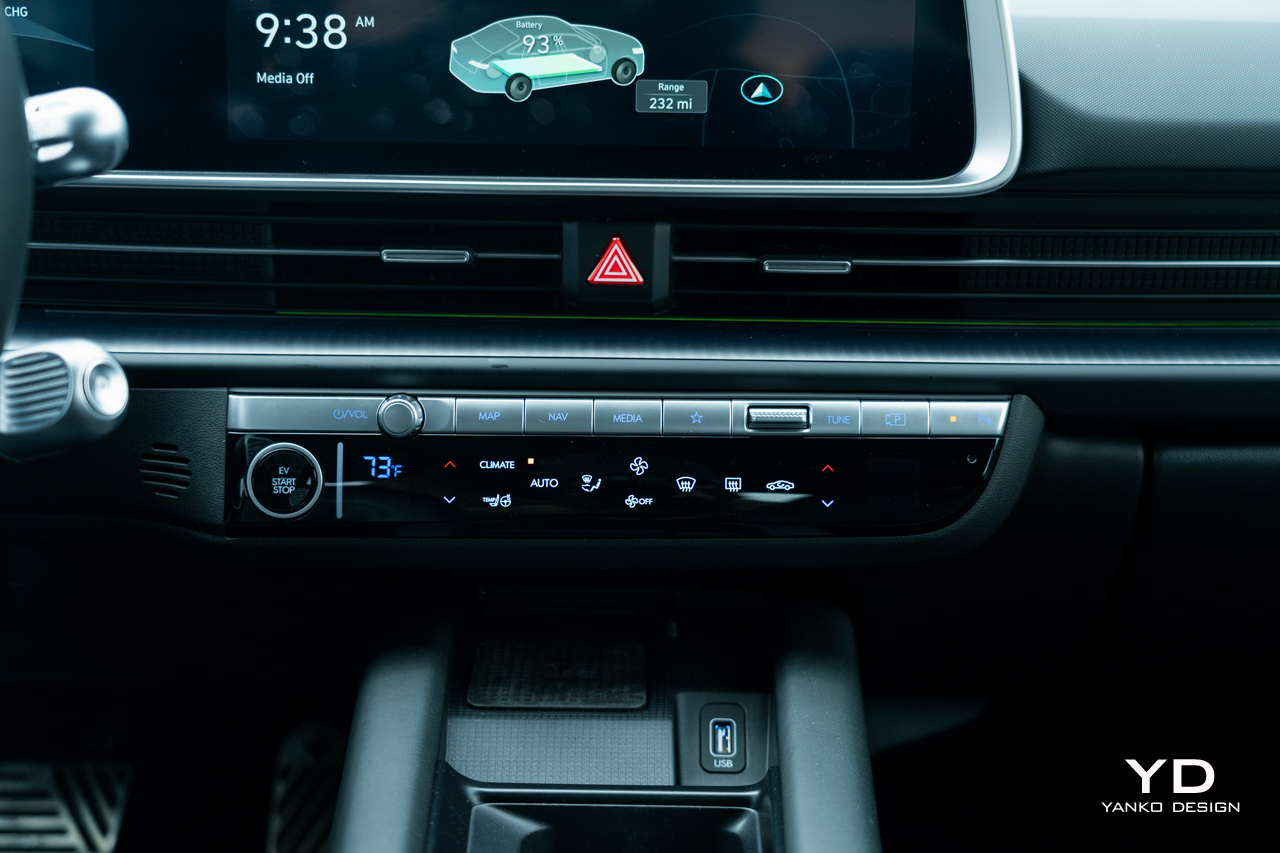
Thumb controls on the wheel make adjusting things like cruise control and media volume easy, while a set of delightfully chunky and tactile stalks behind handle the usual duties for turn signals and wipers. A third stalk, situated low and on the right, is the gear selector. Twist it forward for D, rearward for R, and push in the button on the end for P.
At first, it’s a little easy to get the shifter confused for the wiper stalk, but otherwise, the control layout is intuitive, while the feel of all the controls is excellent.
As is the look of the interior. Though dominated by dark plastics on this particular car that have a bit of a harsh feel to them in places (white is also available), the Ioniq 6 manages to be even more interesting on the inside than on the outside. Subtle ripples on the door cars grow in amplitude from top to bottom, emerging like standing waves as you get close to the handles integrated into large arm rests that feature massive, bright speaker grilles.
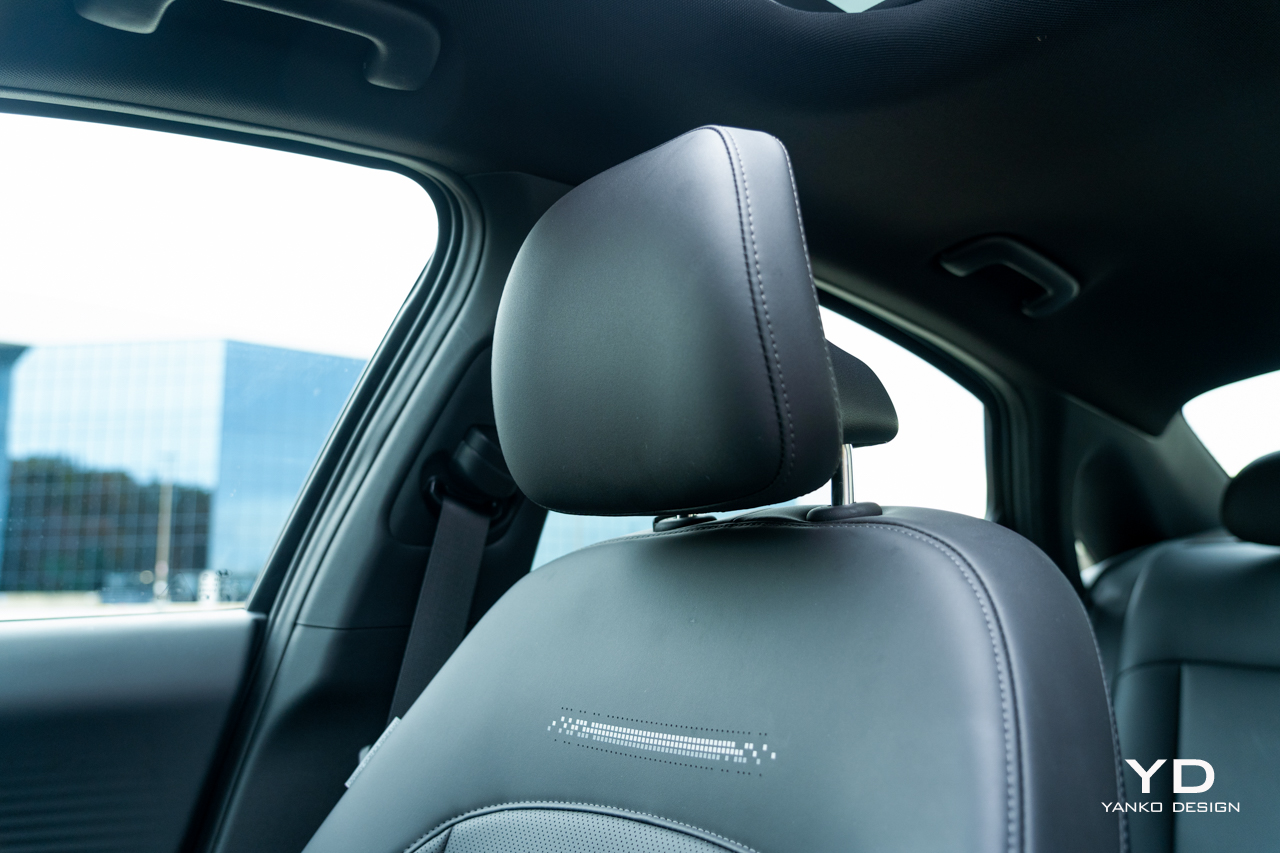
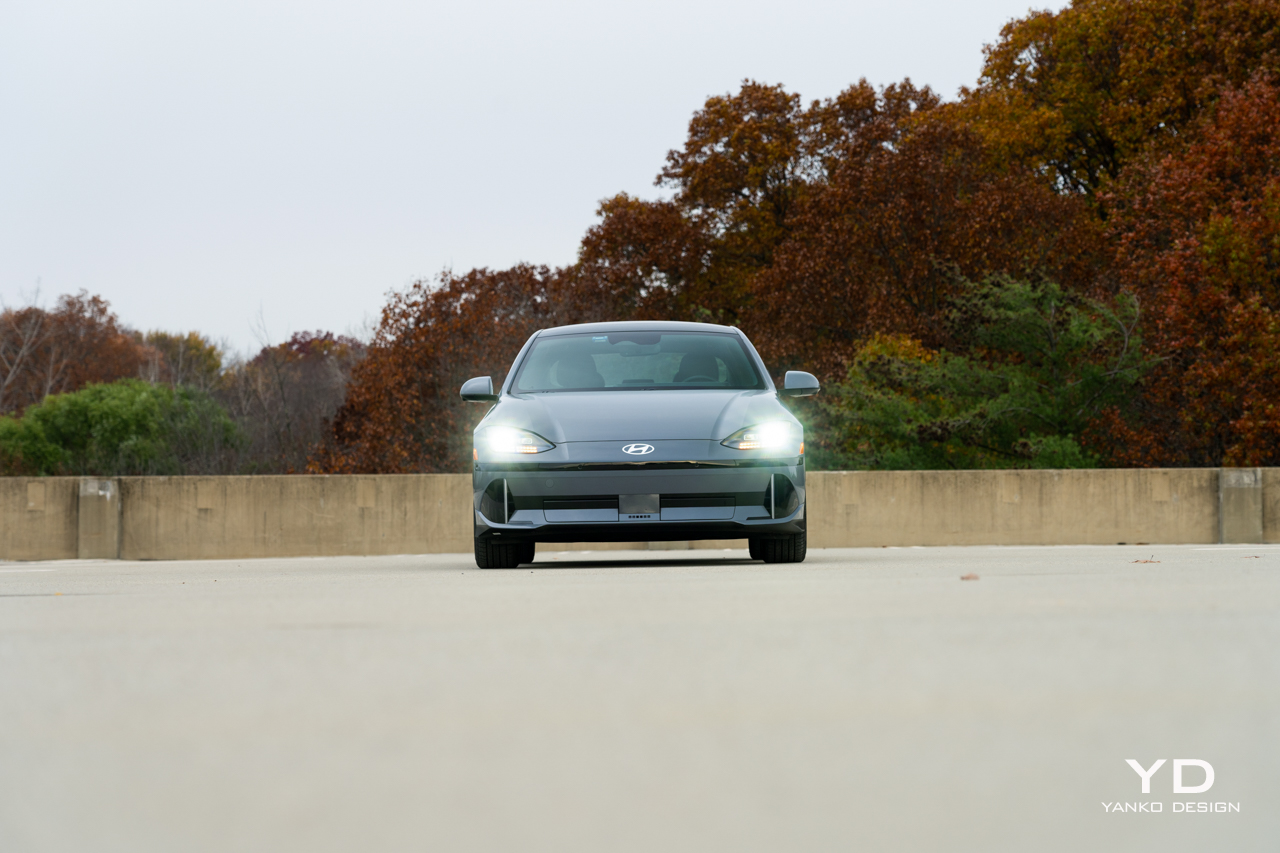
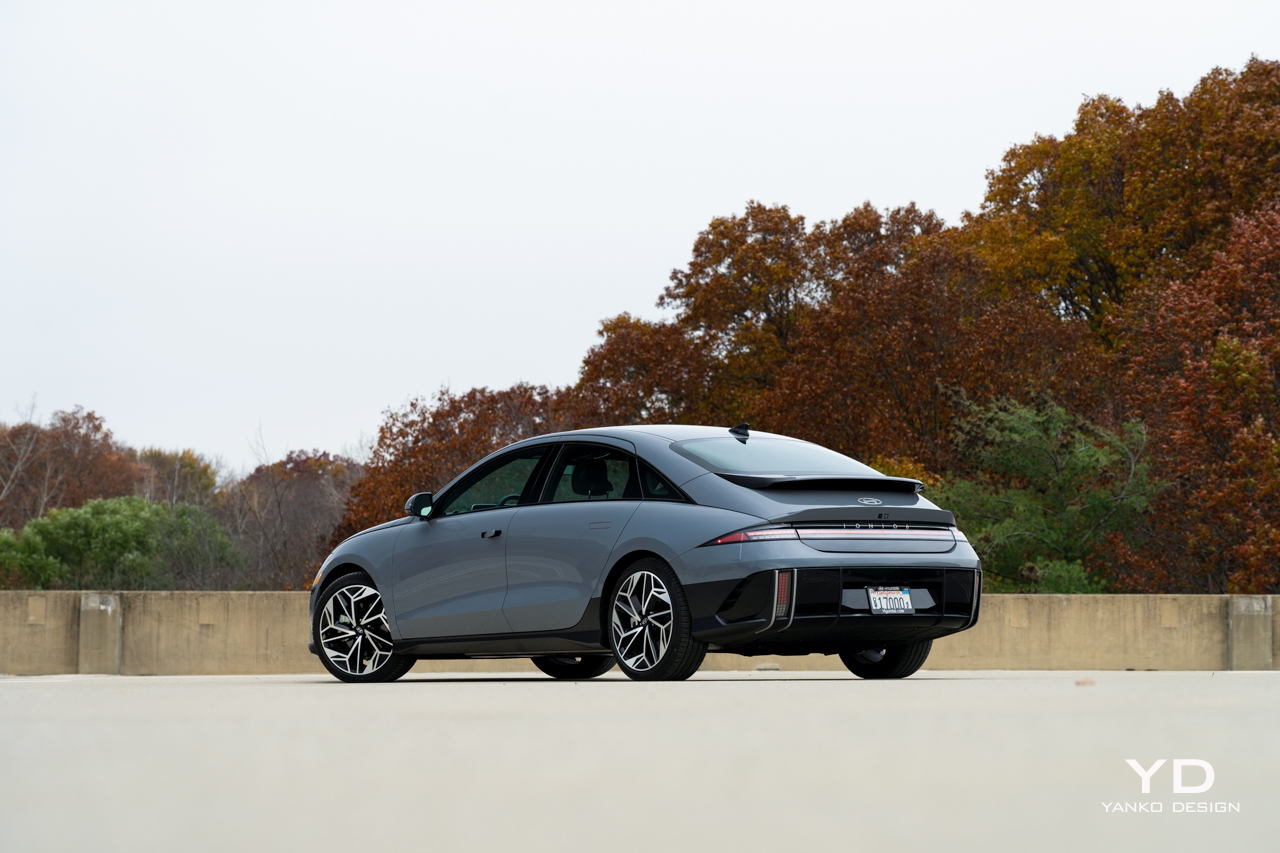
Those speakers are from Bose and offer plenty of power to fill the cabin. There’s perhaps not an excess of finesse from the sound performance here, the prodigious bass coming from the trunk somewhat overshadowing the tweeters in the A-pillars and the speaker perched high on the dashboard.
Upturned edges visually dominate the dash itself, flourishes meant to highlight the integrated, digital side-view mirrors present in international markets but sadly lacking in the U.S.-specification car you see here. Still, it’s a compelling look, all of it punctuated by countless little squares, pixels found everywhere from the dashboard down to the generous storage space on the floor between the seats.
Four more pixels are embedded in the steering wheel, each backed by LEDs that sweep in color in response to drive mode and other features. The Ioniq 6’s ambient lighting can likewise be set to cycle as you tap the Drive Mode button on the steering wheel, with green for Eco, blue for Normal, and red for Sport.
If there’s one disappointing thing in the interior, it’s that Drive Mode dial on the steering wheel. The knurled edges make you want to spin it to cycle from one mode to the next. Sadly, it’s just a simple button, toggling slowly from one mode to the next.
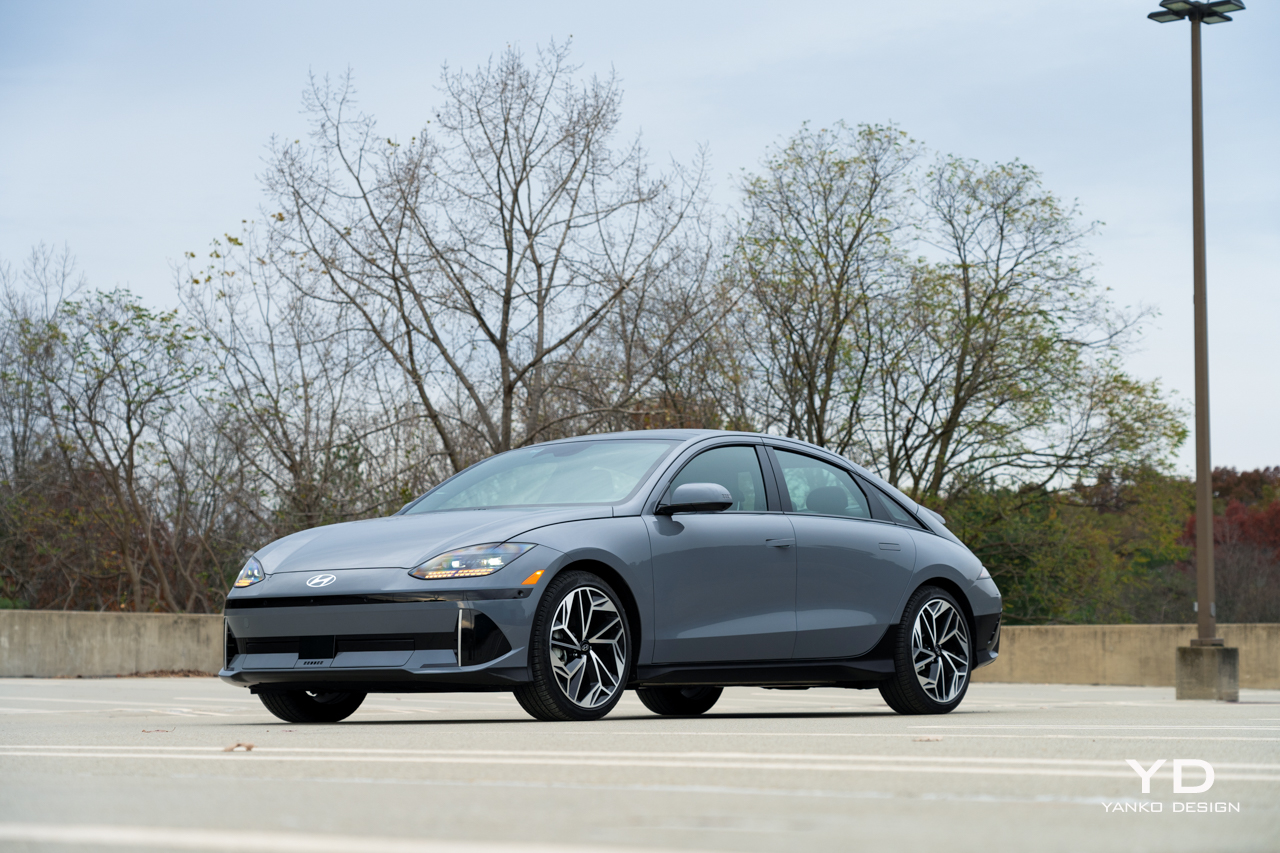
Sport mode
While not as satisfying as a knob to twist, the resulting transformation is still very rewarding, the Ioniq 6 morphing from gentle cruiser to performance-minded hooligan machine with just two taps.
In Eco mode, the cool green ambient lighting matches the calm and quiet cabin. In this mode, the Ioniq 6 is a real pleasure to breeze your way through traffic or down to the shops. The suspension on the Ioniq 6 is tuned to the soft side, a feel that’s just short of floaty.
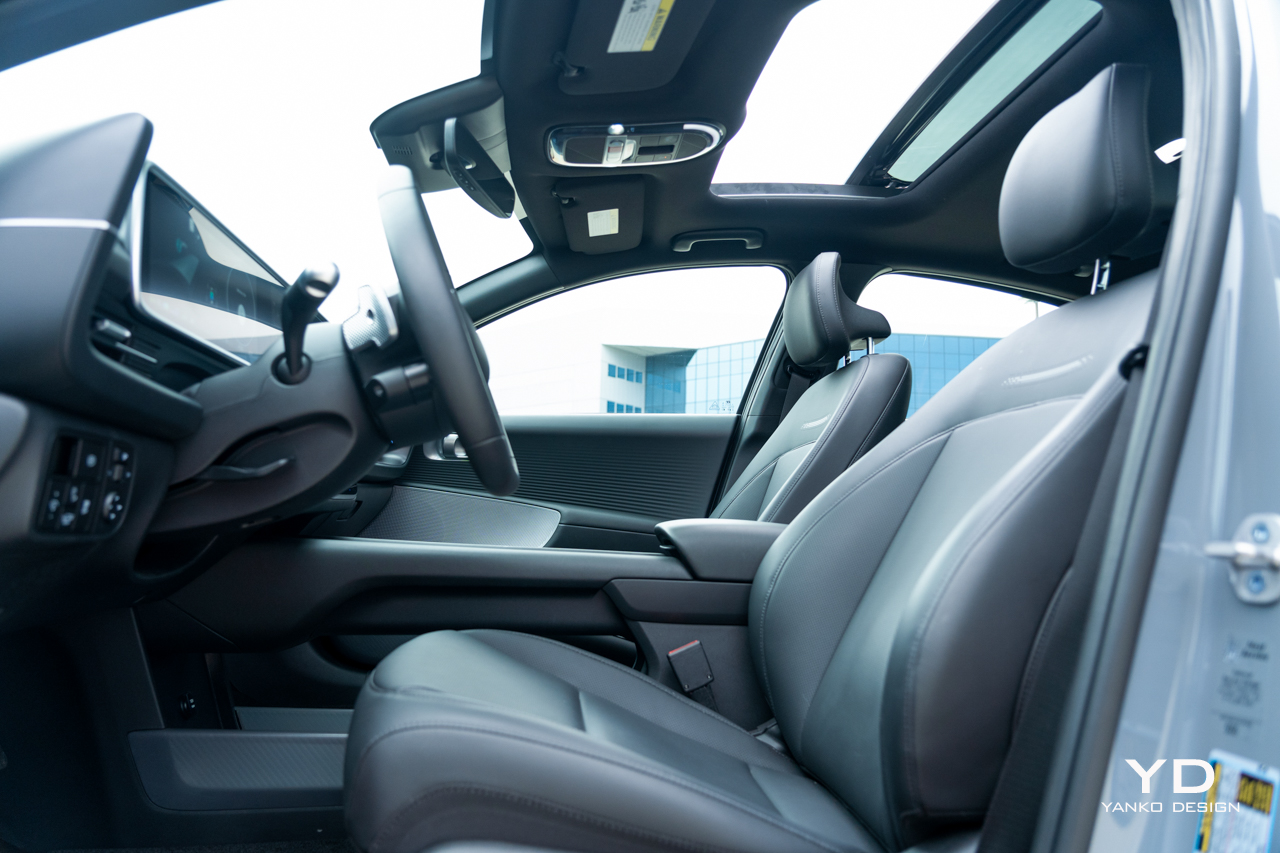
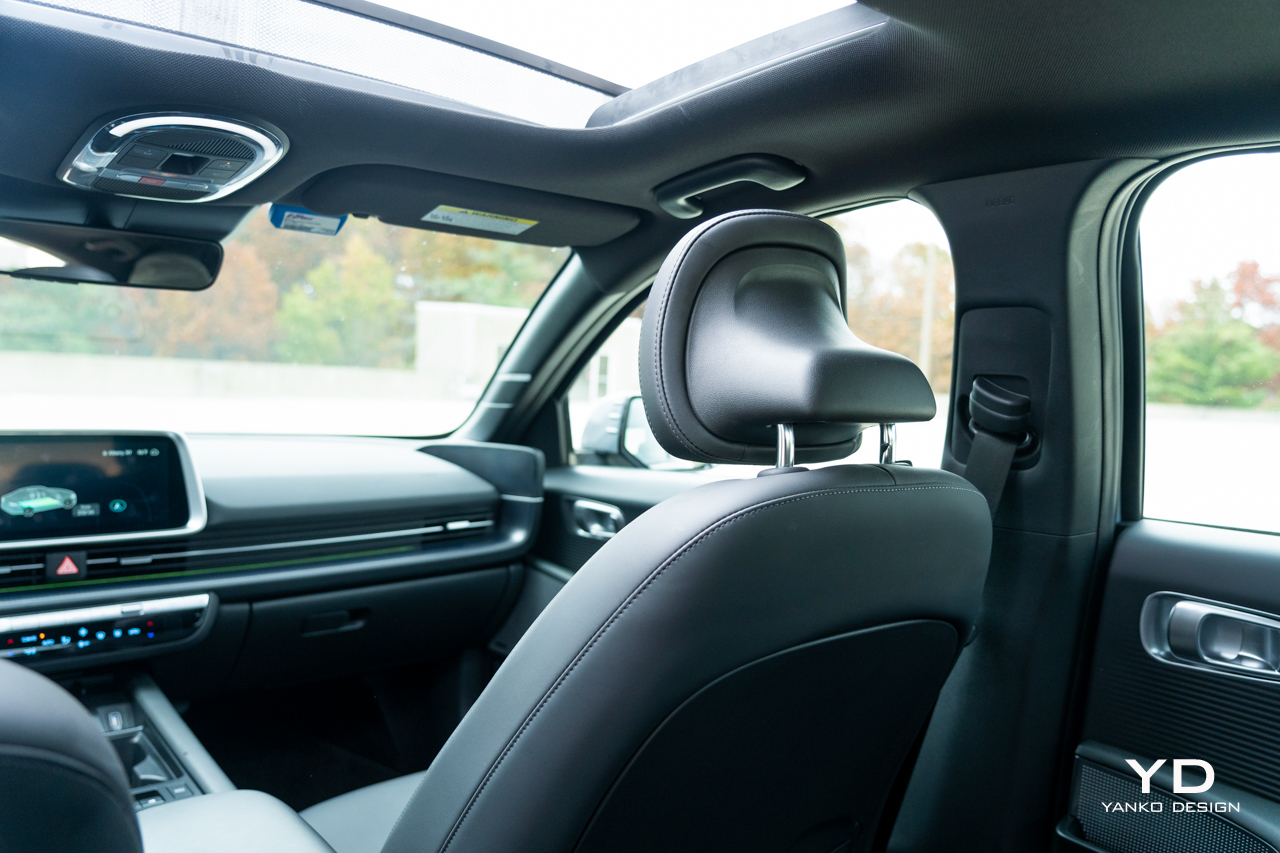
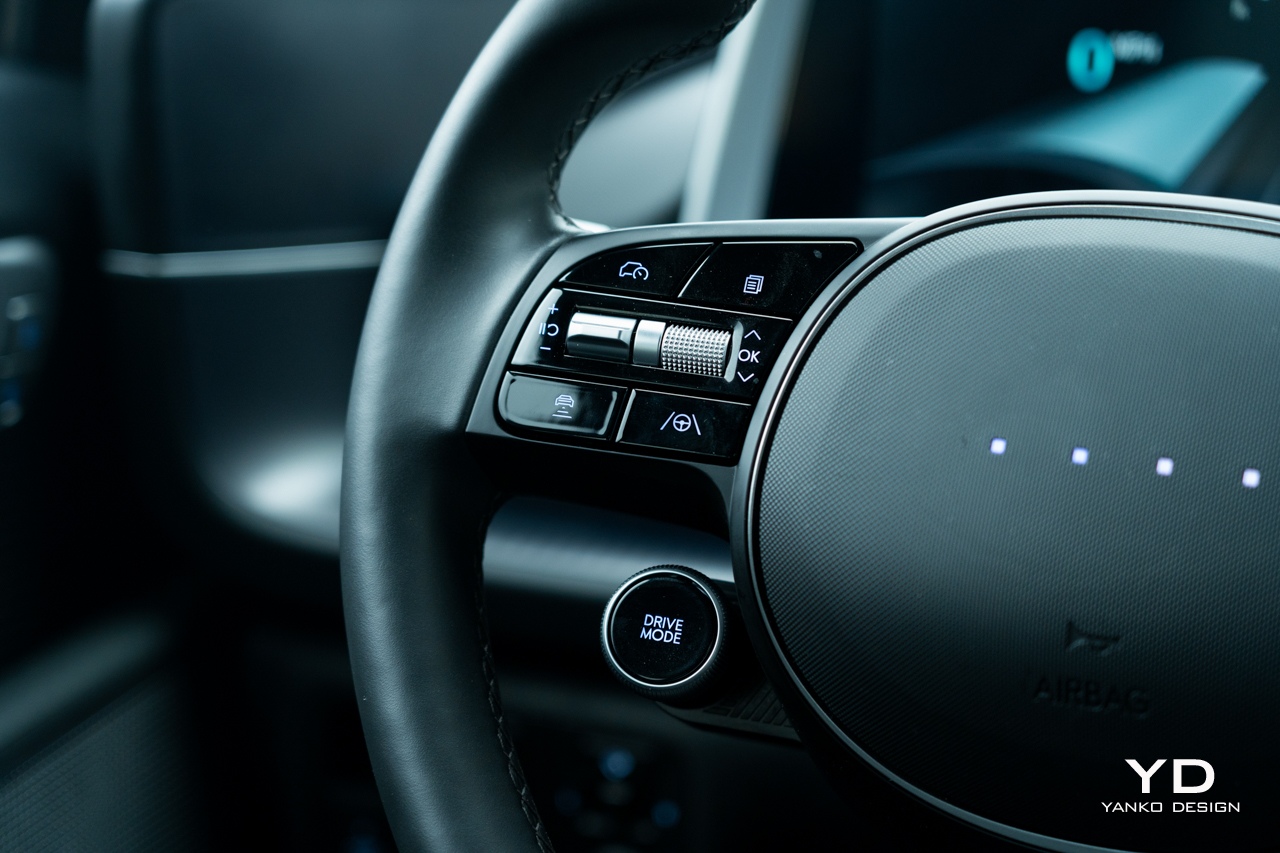
The priority was clearly on ride quality, which is generally good, though the low-profile 20-inch wheels and tires can be a bit harsh on sharp bumps, like broken concrete highways and separation joints. Those looking for the ultimate in cosseting will want to spec the 18-inch wheels and tires found on lesser trims.
Tap twice to cycle into Sport Mode, and things get rambunctious. Though the suspension doesn’t change, the throttle response is sharpened to a point where this dual-motor all-wheel-drive unit leaps forward. 320 horsepower and 446 pound-feet of torque are now readily and eagerly applied to your most subtle whim.
The power is easily enough to overcome the grip offered by the low-rolling-resistance tires here, and once the car’s traction control system detects a hint of spin it neutralizes the power output. Driving the Ioniq 6 hard, then, is a game of managing grip, not asking too much lest you draw the attention of the traction or stability control systems.
With that soft suspension and prodigious dimensions, the Ioniq 6 will never be a sports car. But its strong acceleration will leave nearly anything else on the road in its wake, and it’s a genuinely good time to dart through traffic circles and sling out of fast bends. And, with the regenerative braking set to maximum via the wheel-mounted paddles, there’s little need to remove your foot from the accelerator.
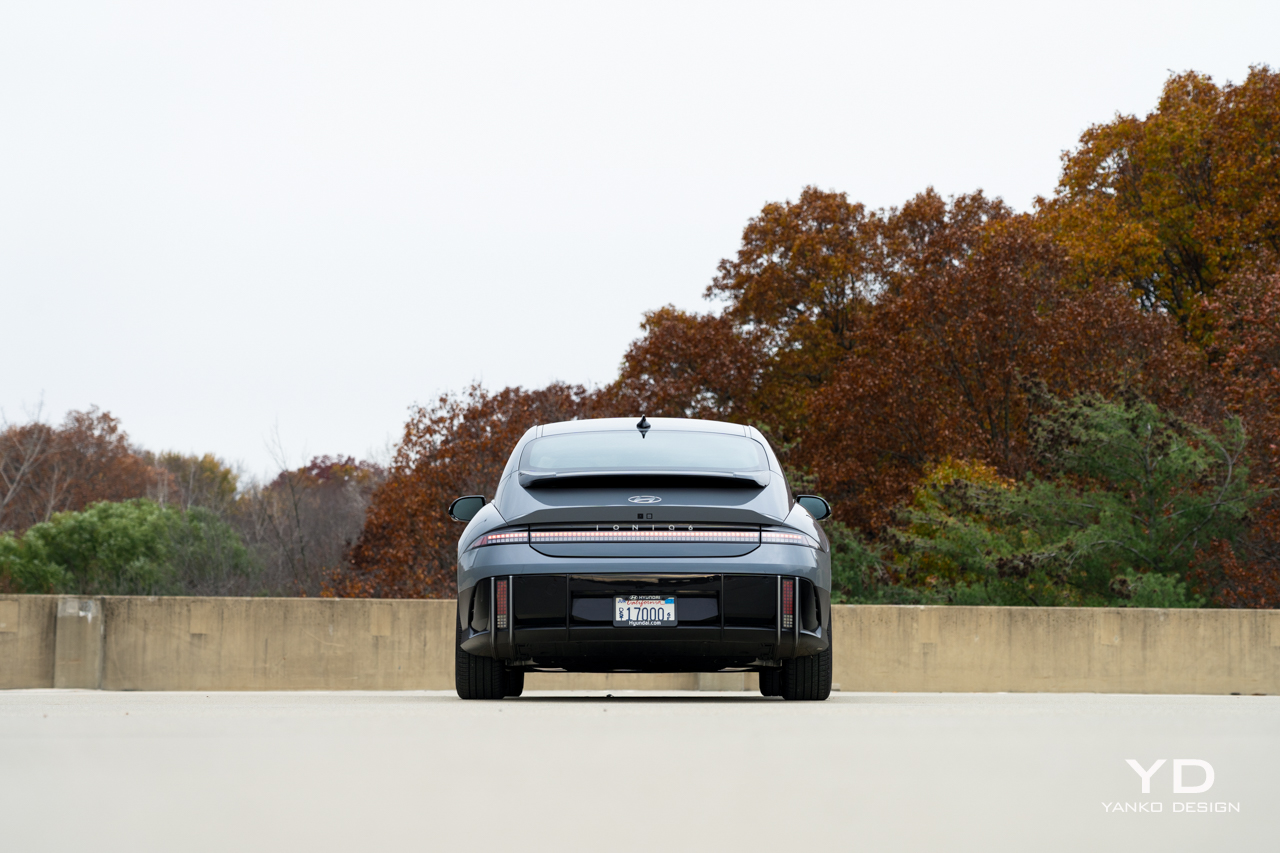
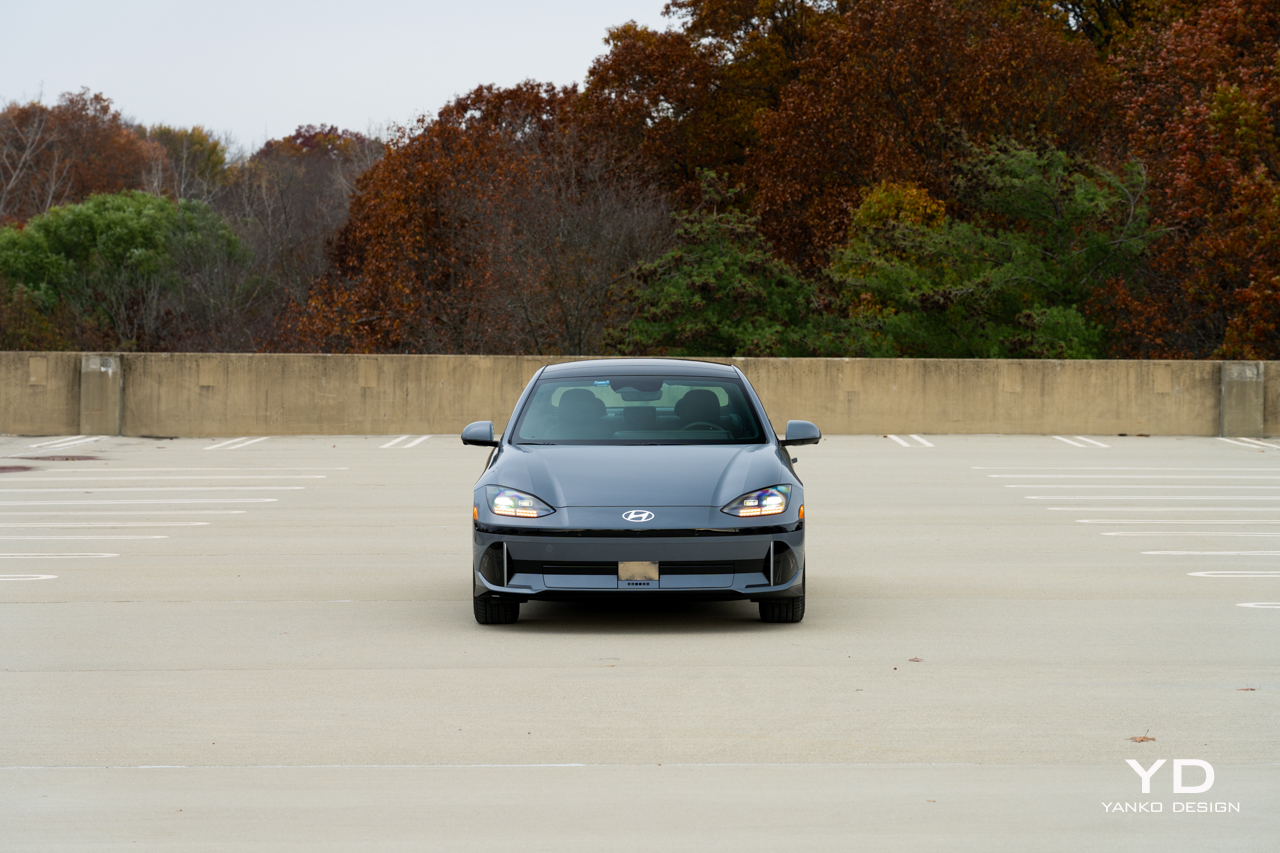
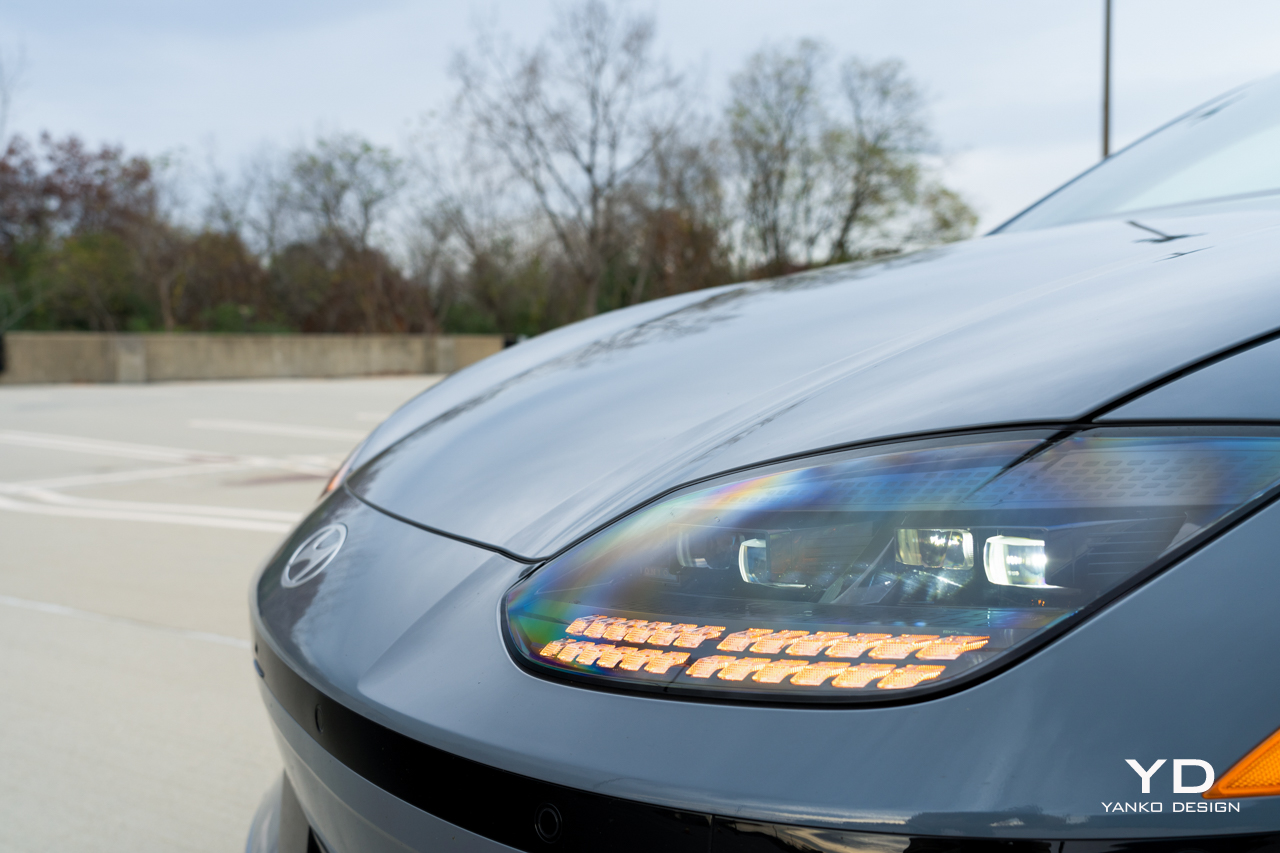
Flog it like this, and the Ioniq 6 won’t come close to its EPA rating of 270 miles on a charge from its 77.4 kWh battery pack. With a combination of hard driving and highway speeds in cold temperatures, I still averaged 2.9 miles per kWh for a theoretical maximum range of 225 miles.
That’s actually quite good, given it was flirting with freezing during my testing. And, because I wasn’t going easy on the accelerator. Driven in more temperate conditions and with a bit more frugality, I’m confident that 270 mile figure is achievable.
That said, I was disappointed by the car’s inaccurate range predictions. In one long, 120-mile highway stretch, the car initially estimated I’d have 80 miles of range remaining when I got to my destination. When I arrived, fewer than 30 miles were left on the clock. That’s despite my using the integrated navigation system, so it knew exactly where I was going and how I was going to get there.
That was a letdown, but Hyundai’s latest Highway Drive Assist system at least impressed. The Ioniq 6 stayed rock-solid, centered in its lane, slowing up or speeding down based on traffic in a casual, no-fuss way. The car will even change lanes on its own, only requiring that you, the driver, signal the change. It worked reliably but slowly, the car often pondering a full three seconds before making its move. That’s too long when there’s traffic about.
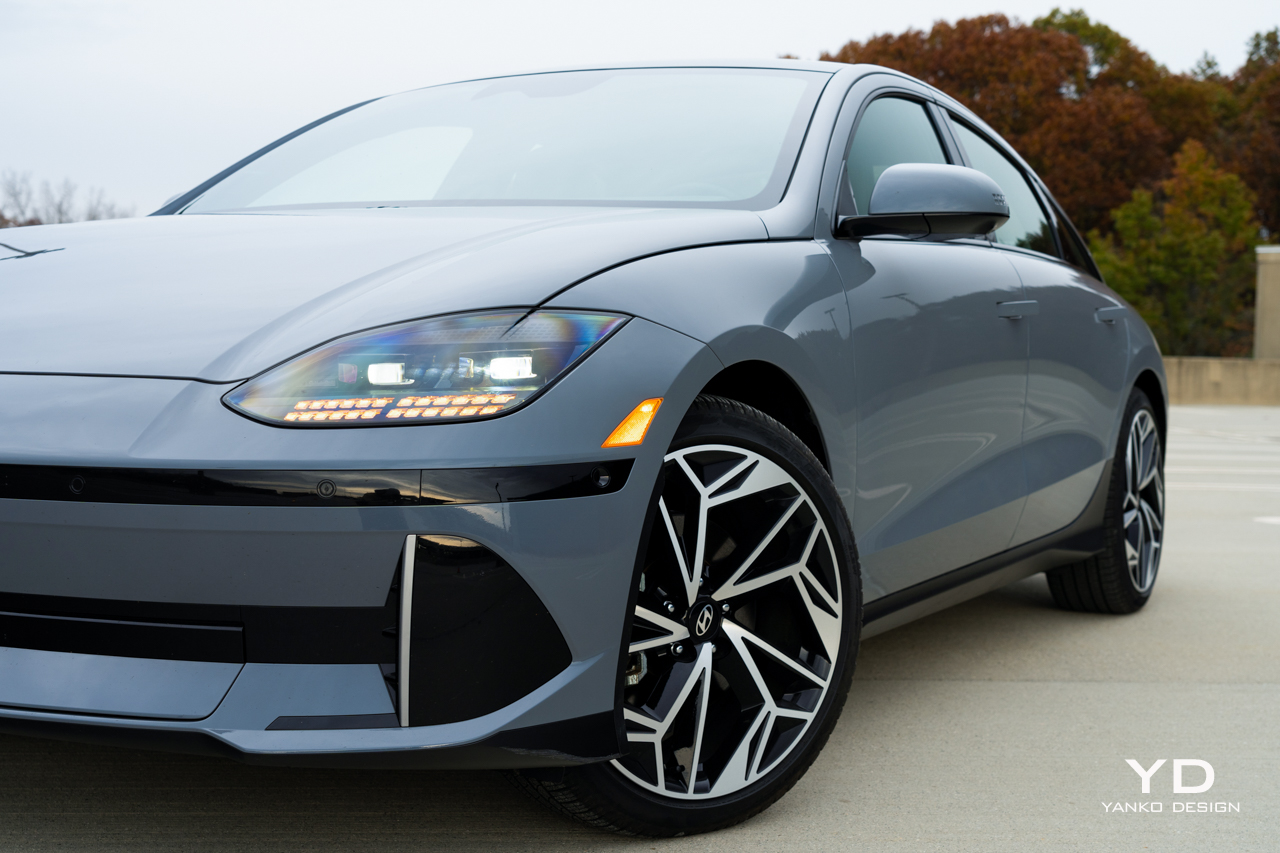
Pricing and Options
Hyundai Ioniq 6 pricing starts at $41,600 for a Standard Range, single-motor model. The model I tested here is a top-shelf Limited Long Range AWD with 20-inch wheels and a $56,100 MSRP. The lone accessory added was $210 for floor mats. Add the $1,115 destination charge, and you have a final asking price of $57,425.
As fun as the Ioniq 6 is with two motors and all the power they bring, to me, the Ioniq 6 is best when driven more casually and frugally. Given that, I’d spec it with the single-motor long-range SE version. That starts at just $45,500 and, though slower, is rated for a remarkable 361 miles on the EPA cycle.
You’d find me hypermiling my way to work, enjoying the kind of range generally only found in cars costing much more, cars that don’t look and feel anywhere near as interesting as this.
